- More hybrid options in the mid-size SUV segment is only a good thing
- Hybrid drivetrain can be quite efficient
- Wonderfully practical and good quality cabin
- Expensive hybrid is only at the top of the range
- No spare wheel or seven-seat layout in hybrid
- Despite top spec, still missing some features
Originally released in Australia in 1997, the Honda CR-V was one of the early members of the medium SUV segment that has grown up to be one of the most popular in Australia. Its combination of all-wheel drive, awesome practicality, good value for money and not-too-big sizing was – in addition to rivals like the Toyota RAV4 and Subaru Forester – evidently quite tempting. Fast forward to 2024 and not only is the mid-size SUV segment one of the most popular in Australia but the CR-V is entering its sixth generation, this time with hybrid power as an option. Is the 2024 Honda CR-V e:HEV RS the mid-size SUV to buy?
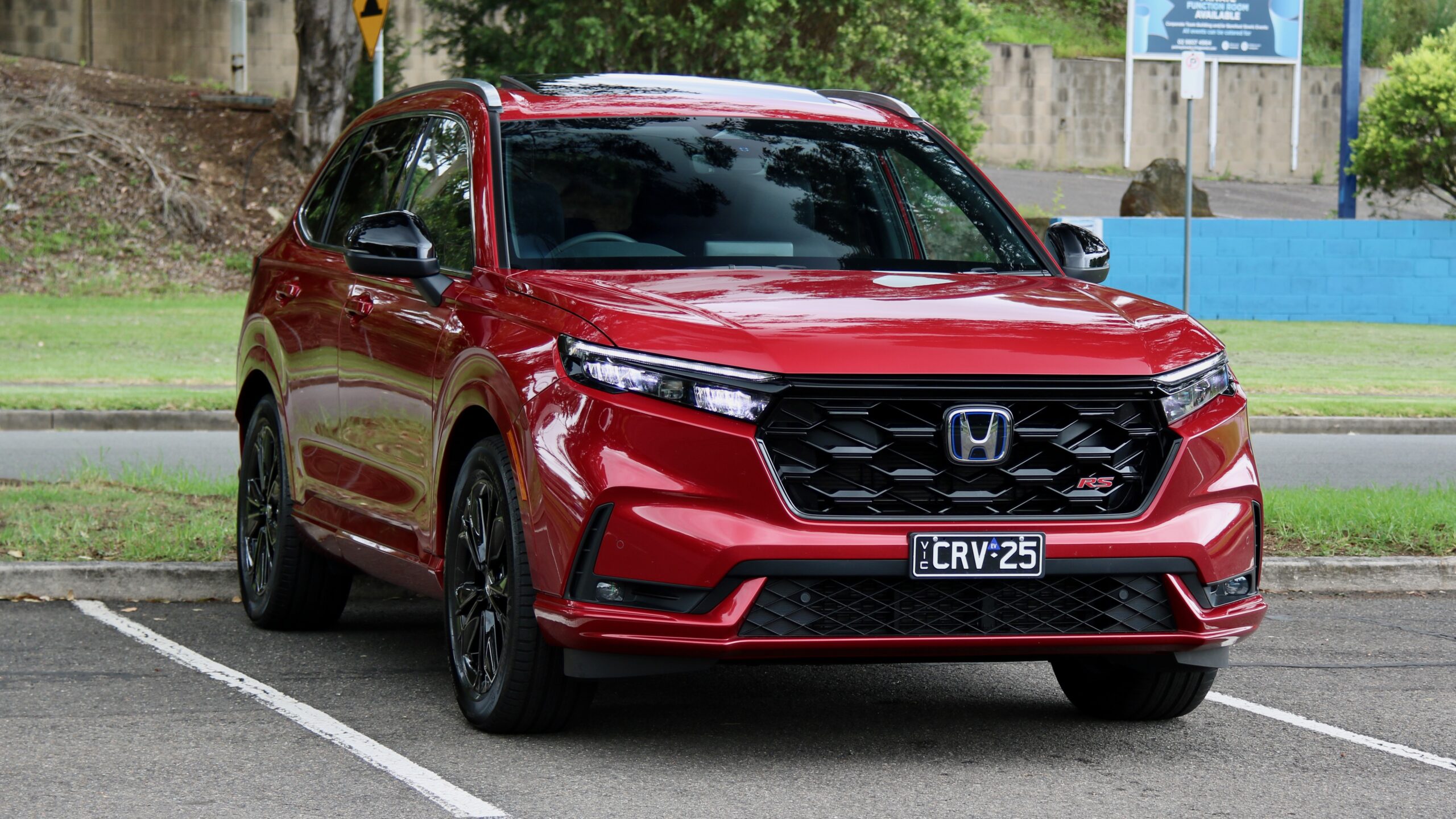
These days, mid-size SUVs are literally everywhere, but back in the 90s, they were still comfortably outsold by cars like the Honda Accord. Because buyers clearly want them, there are seemingly endless offerings to choose from. Competing with the CR-V are cars like the Toyota RAV4, Nissan X-Trail, Mitsubishi Outlander, Subaru Forester, Volkswagen Tiguan, Skoda Karoq, Peugeot 3008, Haval H6 and MG HS, just to name a few. The CR-V’s practicality set the it apart in the 90s, so is it the same today?
How much does the 2024 Honda CR-V e:HEV RS cost to buy?
For the sixth-generation CR-V range, pricing starts at $44,500 drive away for the entry-level VTi X and ranges to $59,900 drive away for the top-spec e:HEV RS that we’re testing here. Both those models are front-wheel drive and feature five seats, but all-wheel drive is available in some models with five seats, while some front-wheel drive models are also available with seven seats. As with all other new Honda models, the CR-V’s pricing is fixed nationwide and there are no paid options.
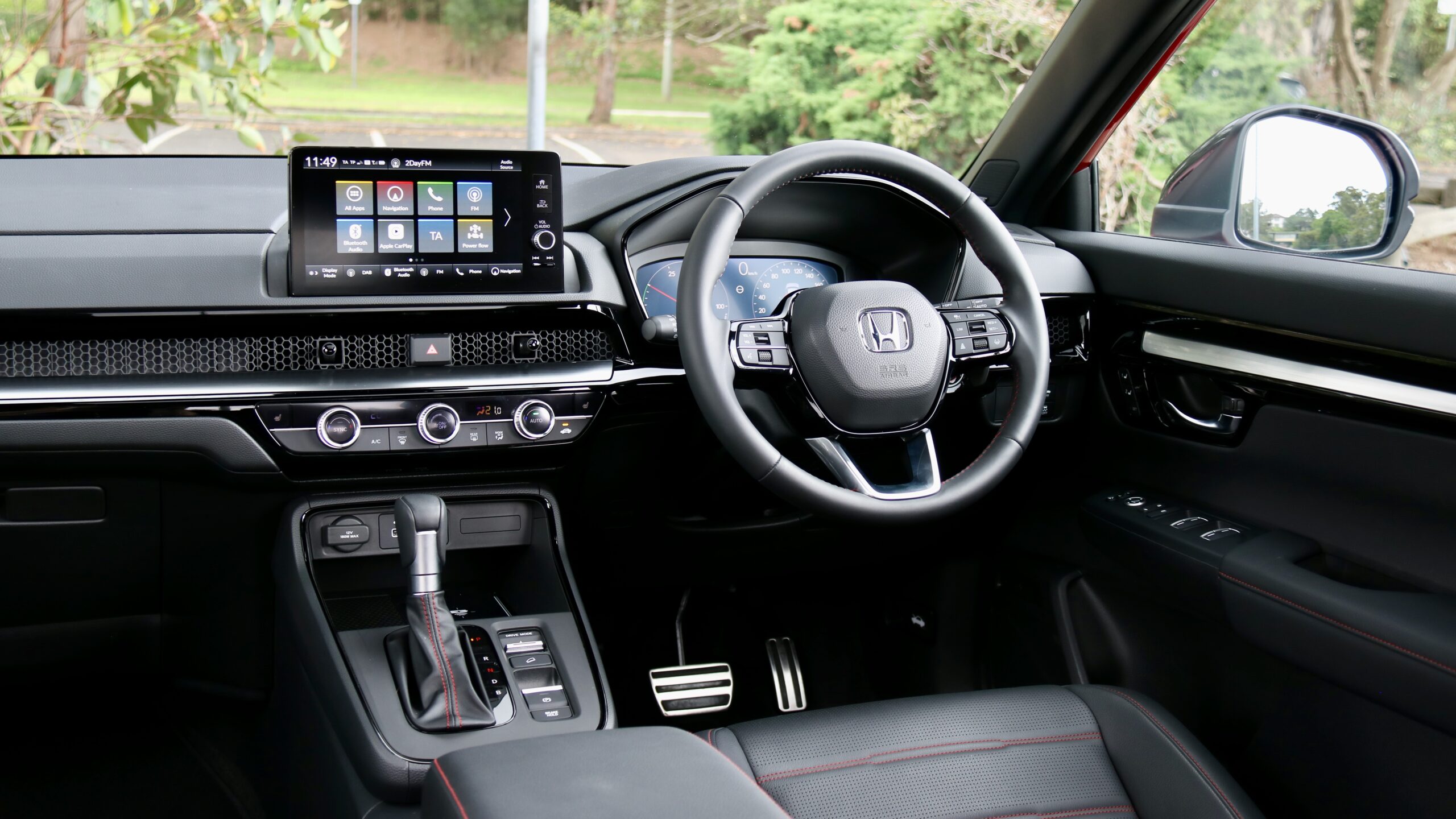
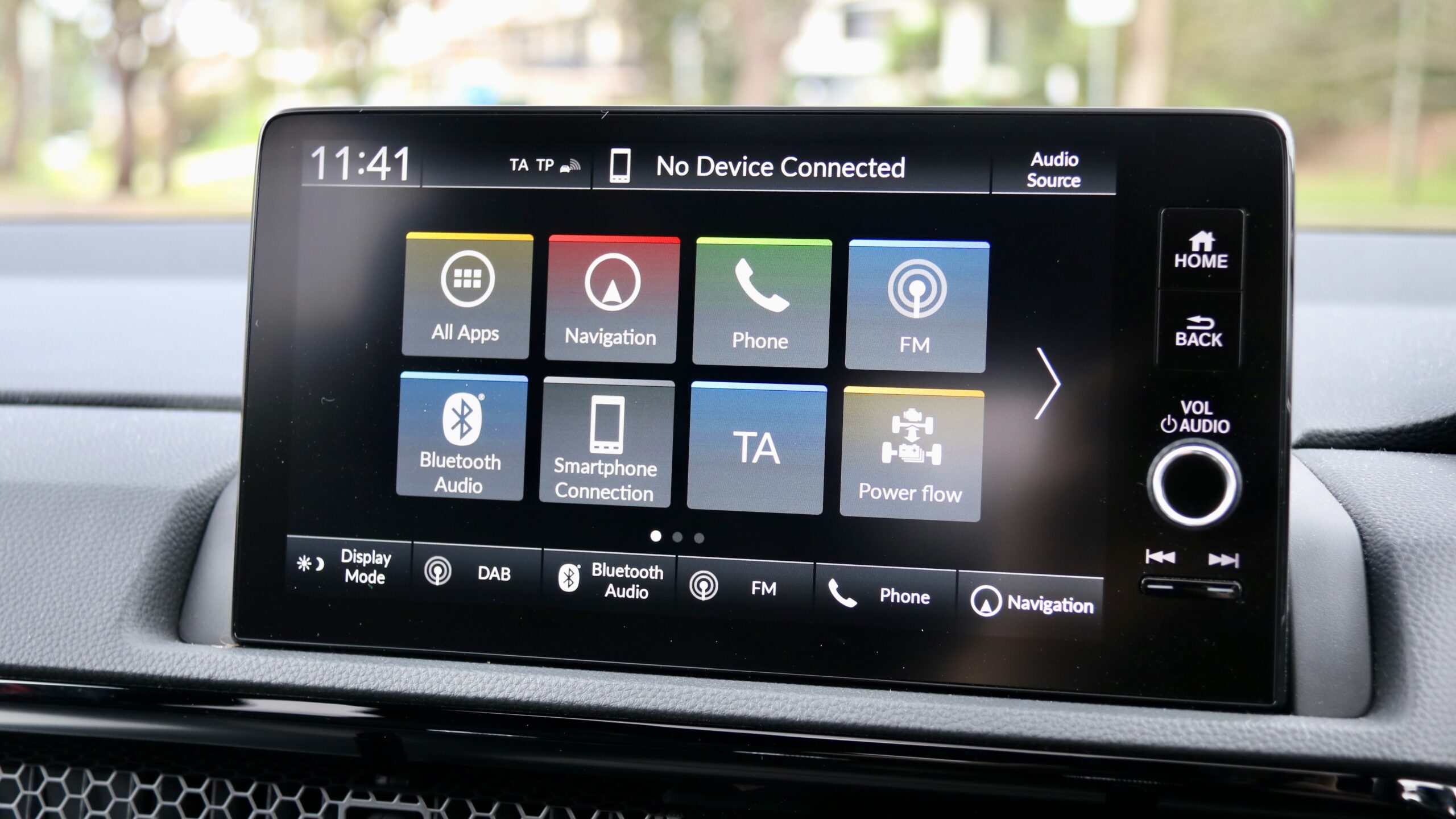
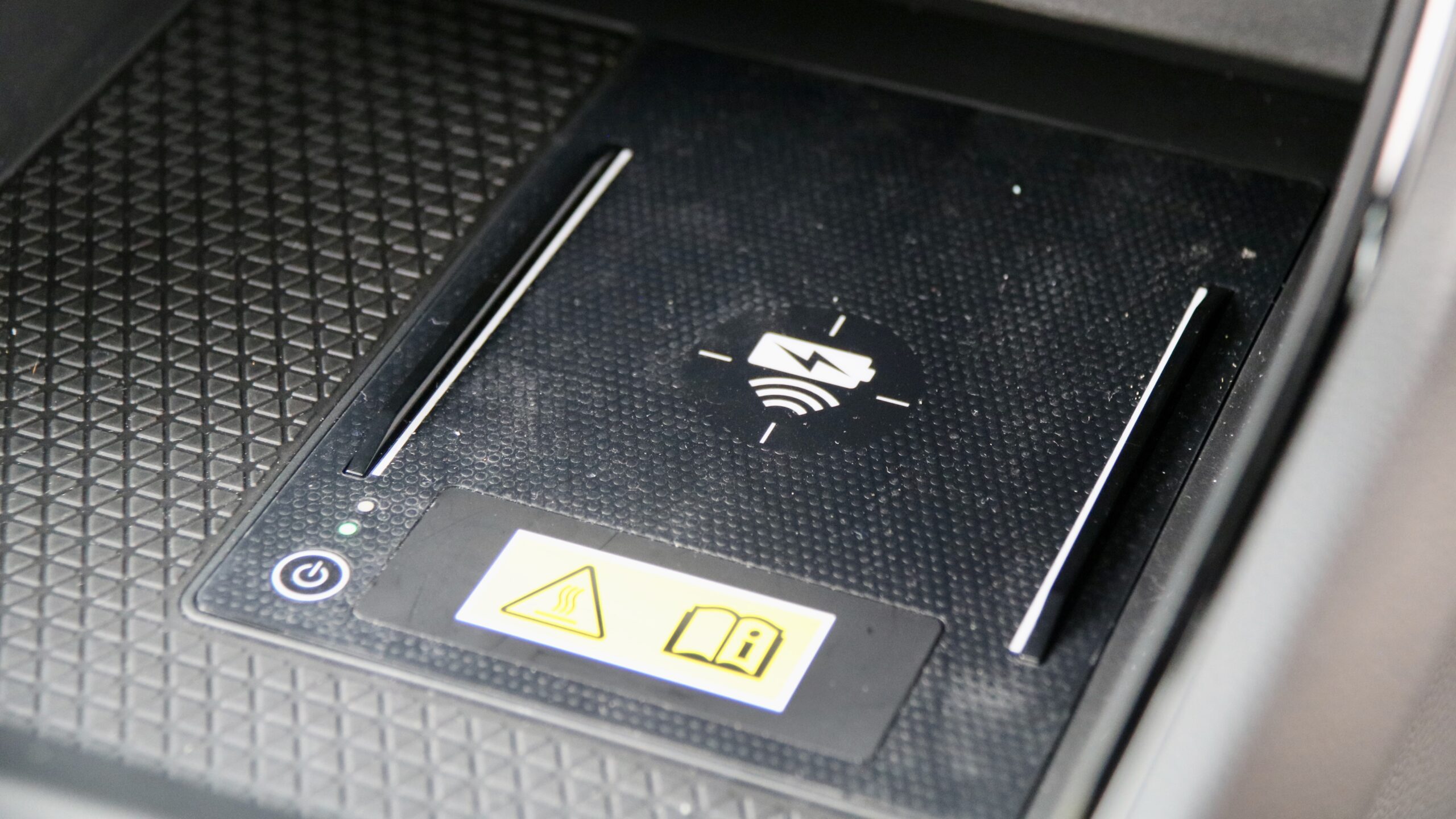
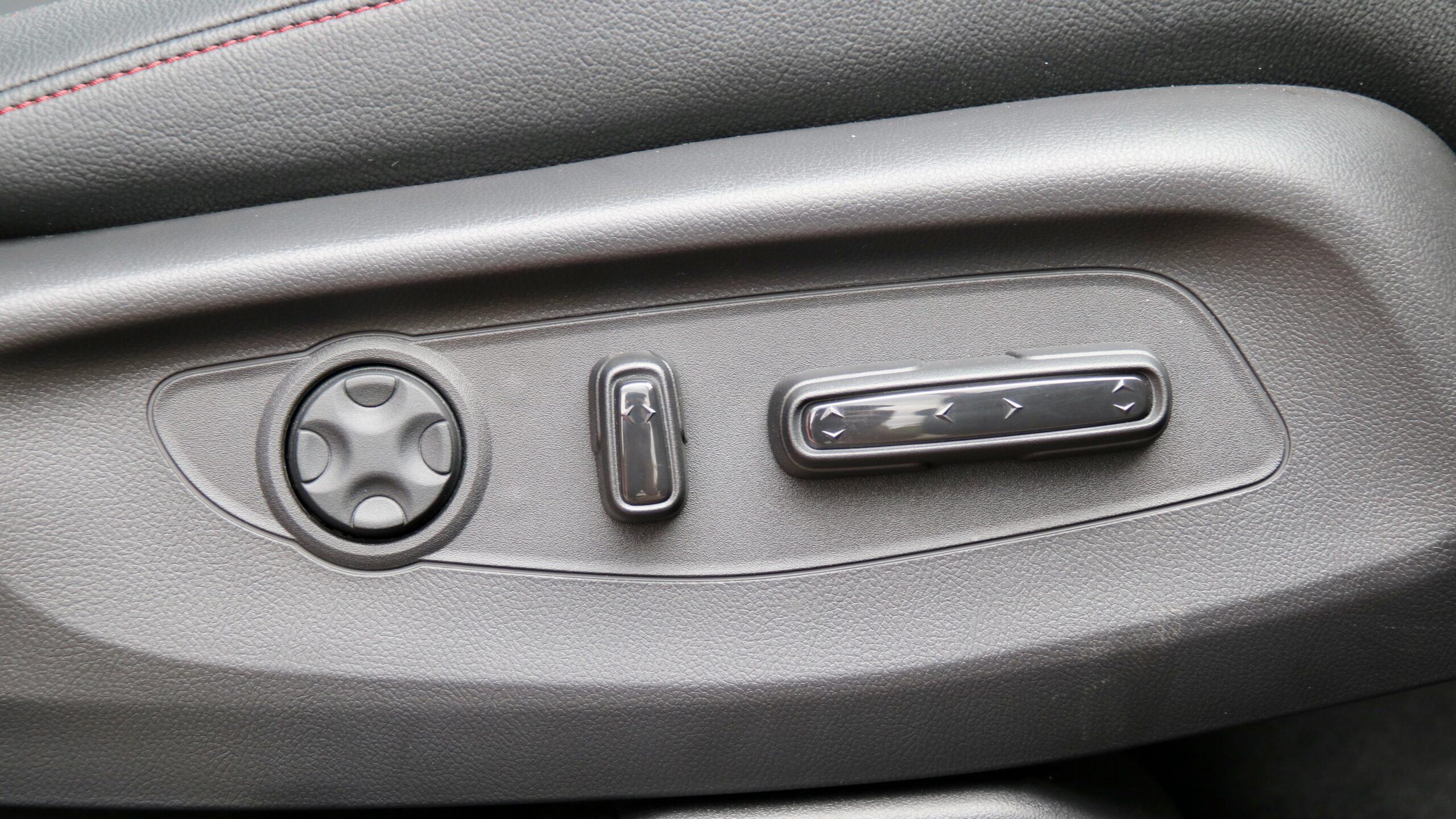
CR-V e:HEV RS standard equipment:
- 19-inch alloy wheels with a tyre repair kit
- Automatic dusk- and rain-sensing all-LED exterior lighting (including sequential front turn signals and front and rear fog lights)
- Automatic rain-sensing wipers
- Heated and electric-folding mirrors with passenger automatic kerb tilting in reverse
- Keyless entry and push button start and walk away locking
- Electric tailgate with kick-to-open and walk away close functionality
- Rear privacy glass
- Panoramic sunroof
- Gloss black exterior trim on the grille, mirrors and roof rails
- Dual-zone climate control with rear air vents
- Leather upholstery
- Heated and electrically adjustable front seats (driver: 10-way, passenger: four-way) with driver’s memory functionality
- Leather steering wheel and gearknob
- 10.2-inch digital driver’s display
- 9.0-inch touchscreen with over-the-air updates
- ‘Honda Connect’ live services including remote access through a smartphone app
- Wireless and wired Apple CarPlay and wired Android Auto
- Satellite navigation
- AM/FM/DAB+ digital radio
- Bluetooth calling and audio streaming
- Four (1x USB-A and 3x USB-C) ports
- 12-speaker Bose sound system
- Wireless phone charger
- Sport, eco and normal driving modes
- Selectable regenerative braking levels
- Auto-dimming rear mirror
- Child minder second rear mirror
CR-V e:HEV RS standard safety equipment:
- 11 airbags (including centre, knee and rear side units)
- Auto emergency braking (AEB)
- Low-speed rear automatic braking
- Lane keeping assistance with lane departure warning
- Matrix adaptive high beam
- Blind-spot monitoring with rear cross-traffic alert
- Adaptive cruise control with traffic jam assist
- Adaptive lane guidance
- Driver attention monitoring
- Traffic sign recognition
- Tyre pressure monitoring
- Alarm
- Front and rear parking sensors
- Reversing camera
The current-generation Honda CR-V is yet to be tested by either ANCAP or Euro NCAP for safety.
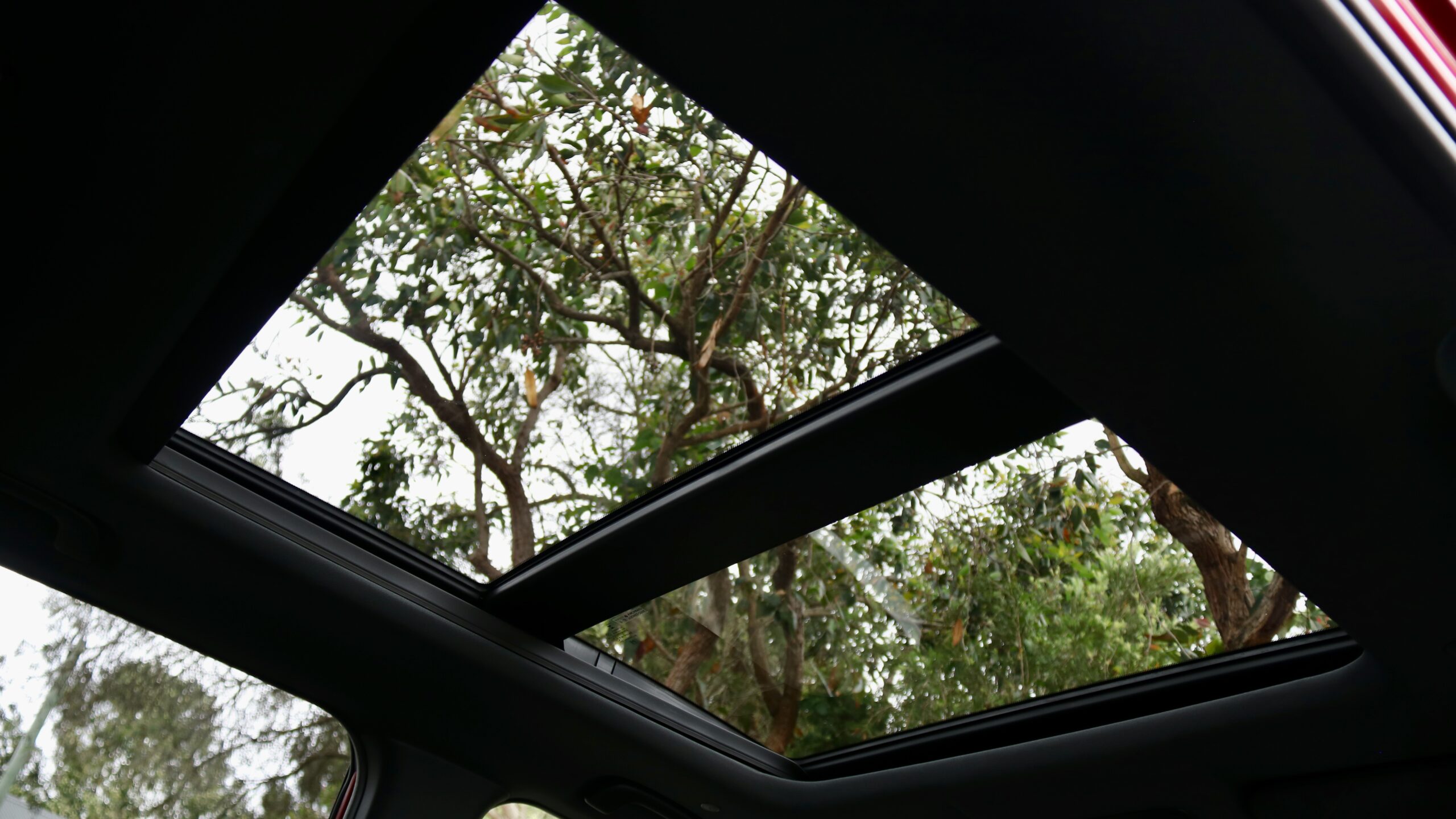
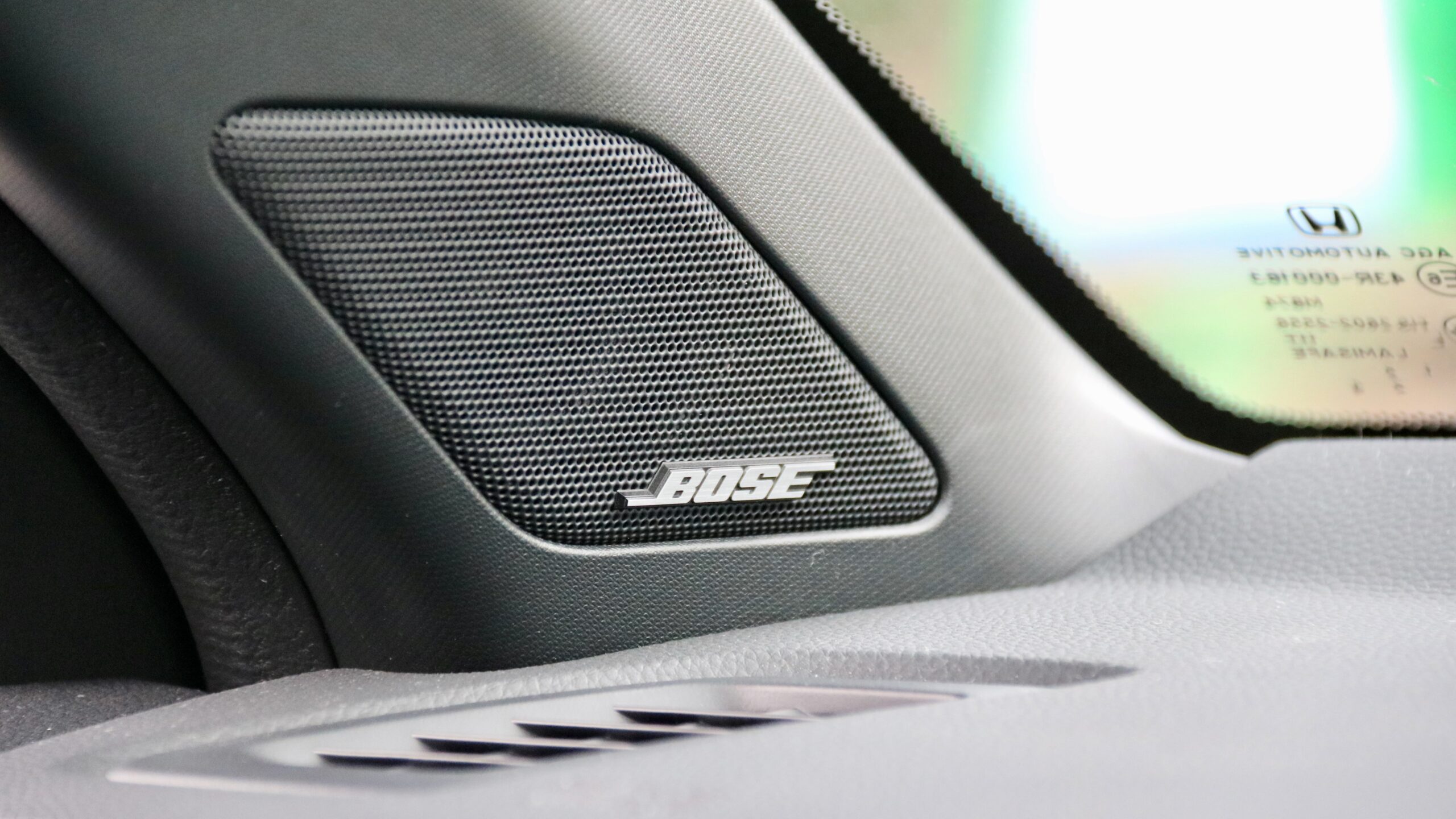
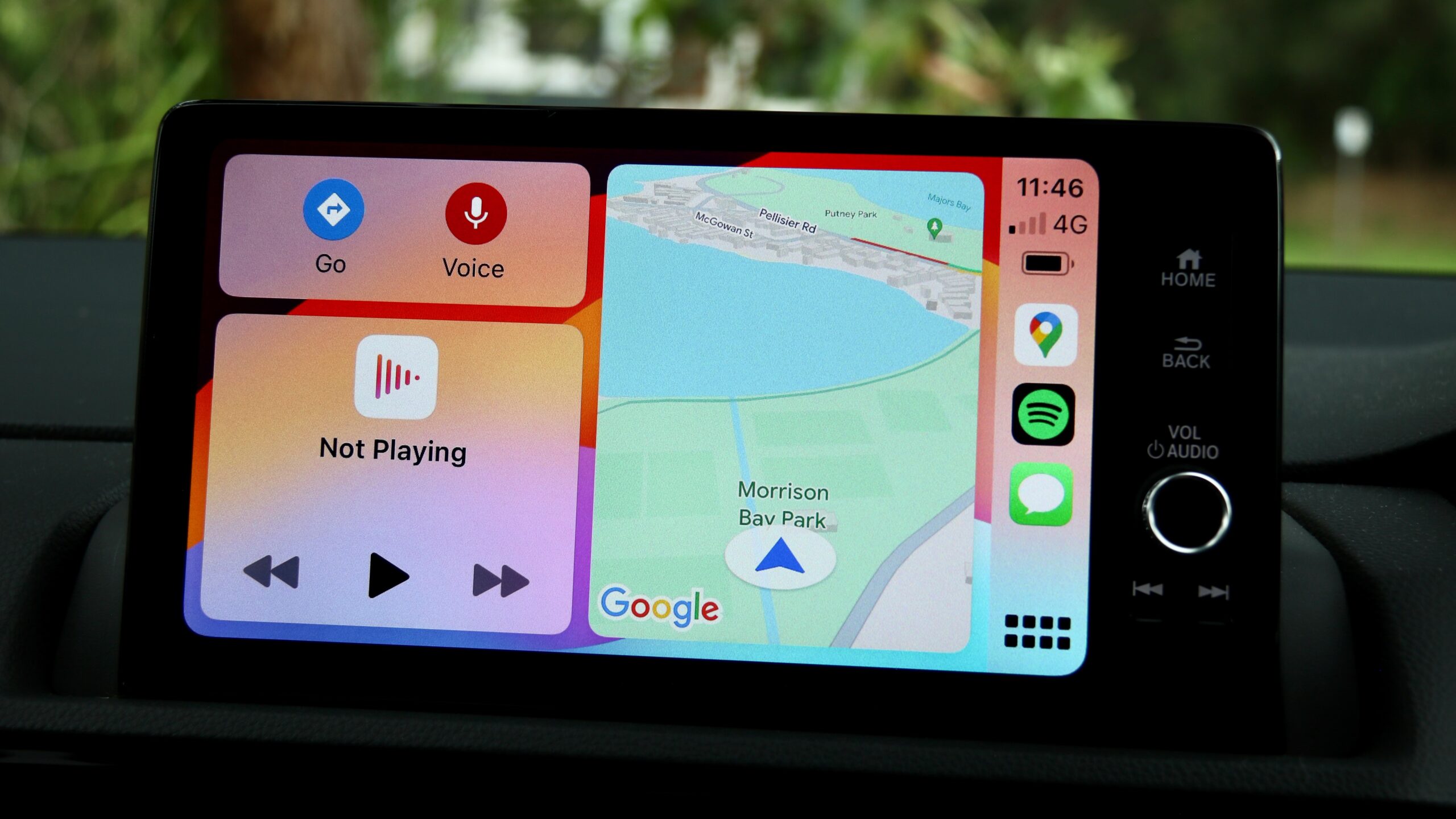
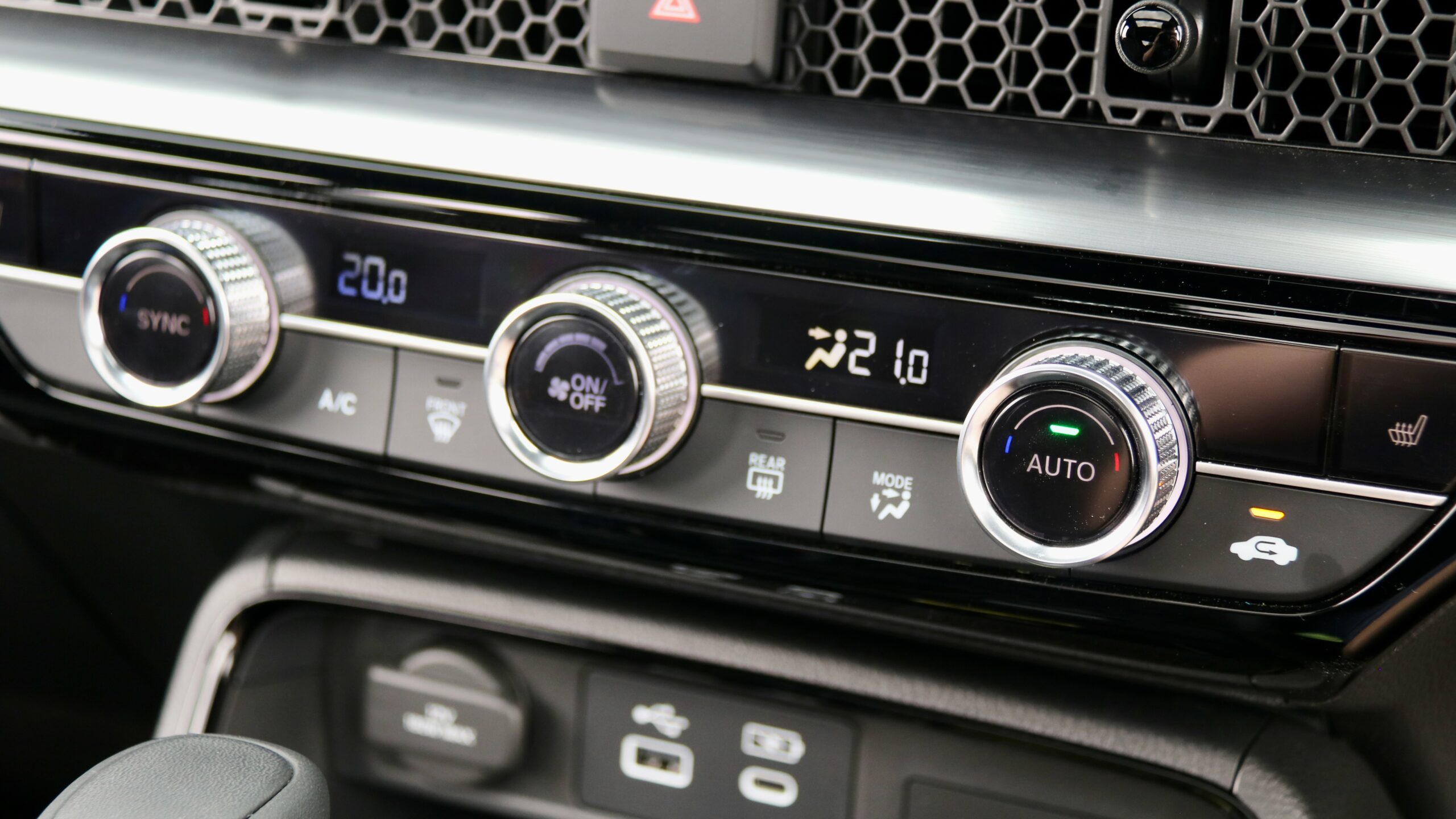
CR-V e:HEV RS colour range (all no-cost):
- Ignite Red metallic (on our test car)
- Platinum White pearlescent
- Lunar Silver metallic
- Meteoroid Grey metallic
- Crystal Black pearlescent
- Canyon River Blue metallic
While there are a plethora of mid-size SUV rivals to the CR-V range, amazingly there are only four hybrid competitors: the Subaru Forester, Nissan X-Trail e-Power, Toyota RAV4 and Haval H6. Of those four cars, we consider the X-Trail Ti e-Power (around $59,500 drive away, depending on location) and the RAV4 Cruiser Hybrid 2WD (around $56,500 drive away or $59,500 drive away with optional all-wheel drive) to be the CR-V e:HEV RS’ biggest rivals.
Compared to its main rivals, the CR-V will potentially lose points with some buyers because it’s only available in front-wheel drive form – the X-Trail e-Power features all-wheel drive as standard and Toyota gives buyers the choice of either. Generally, these particular CR-V, X-Trail and RAV4 models are quite equally well equipped. Against the Nissan, the CR-V’s screens are smaller (it features a 12.3-inch unit for both the infotainment and driver’s display) and it has a head-up display and tri-zone climate control, but the Nissan doesn’t feature live services. The CR-V also adds a Bose sound system and power tailgate (Nissan makes buyers step up to the top-spec Ti-L for those features) over the X-Trail.
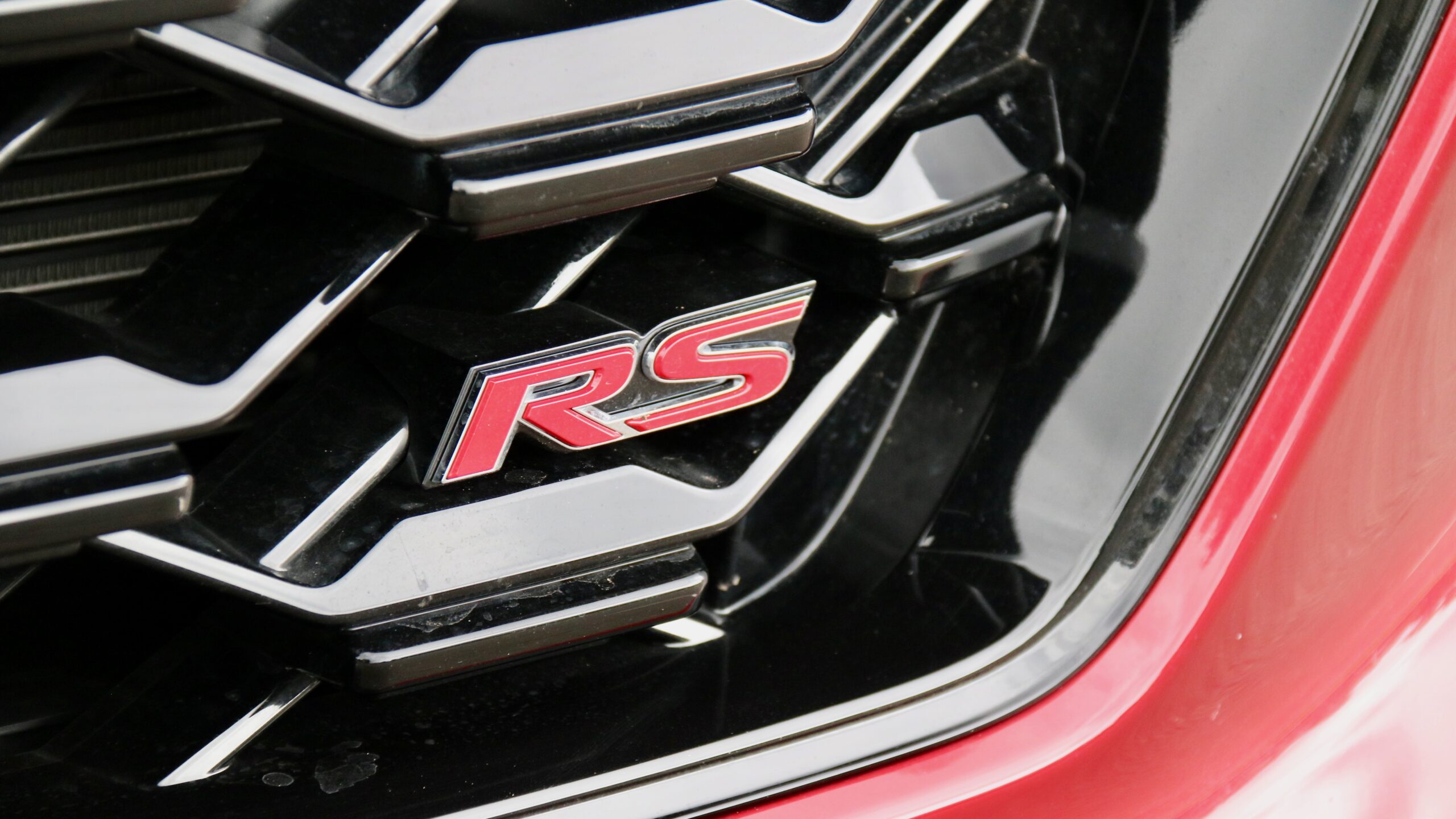
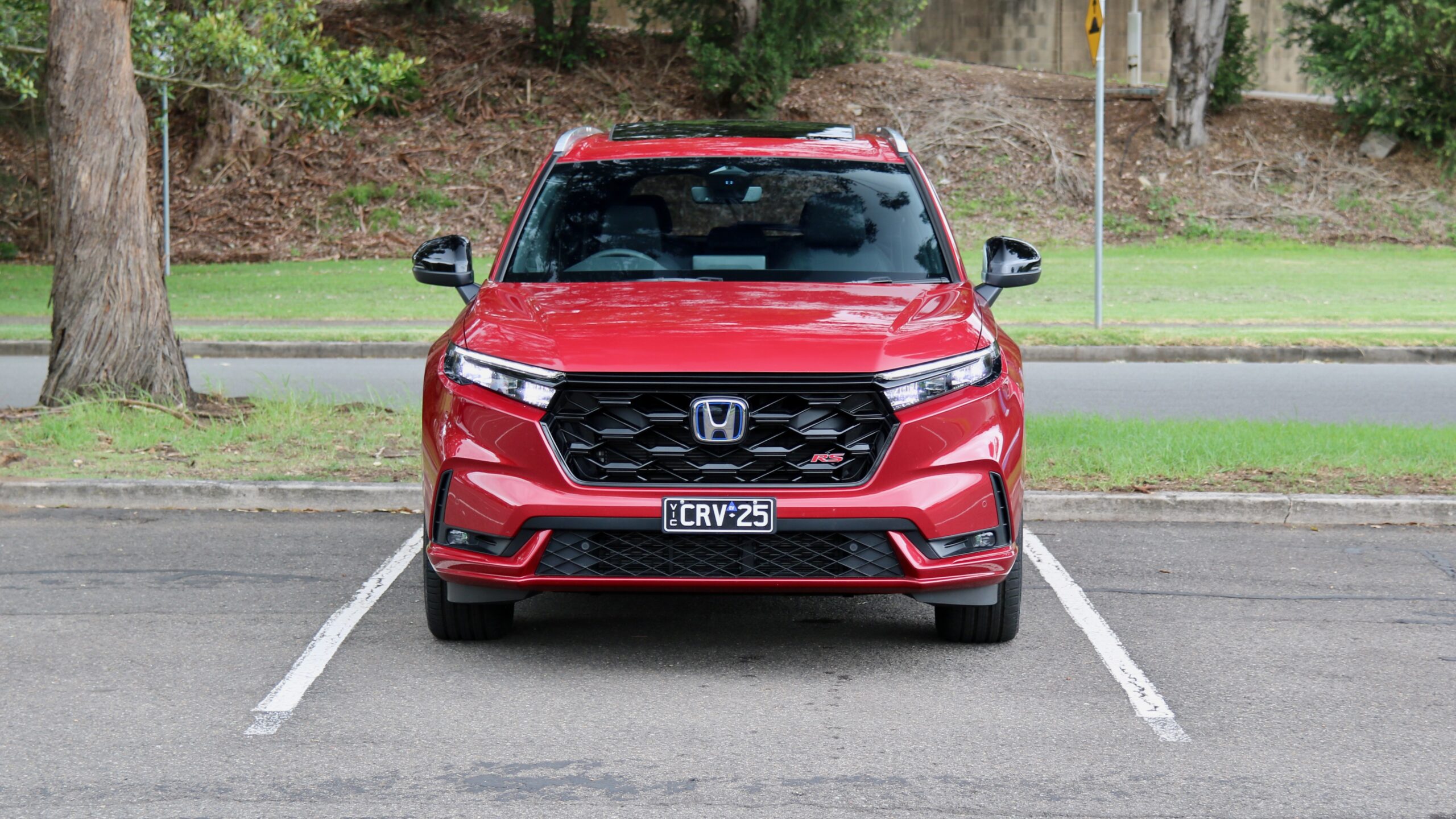
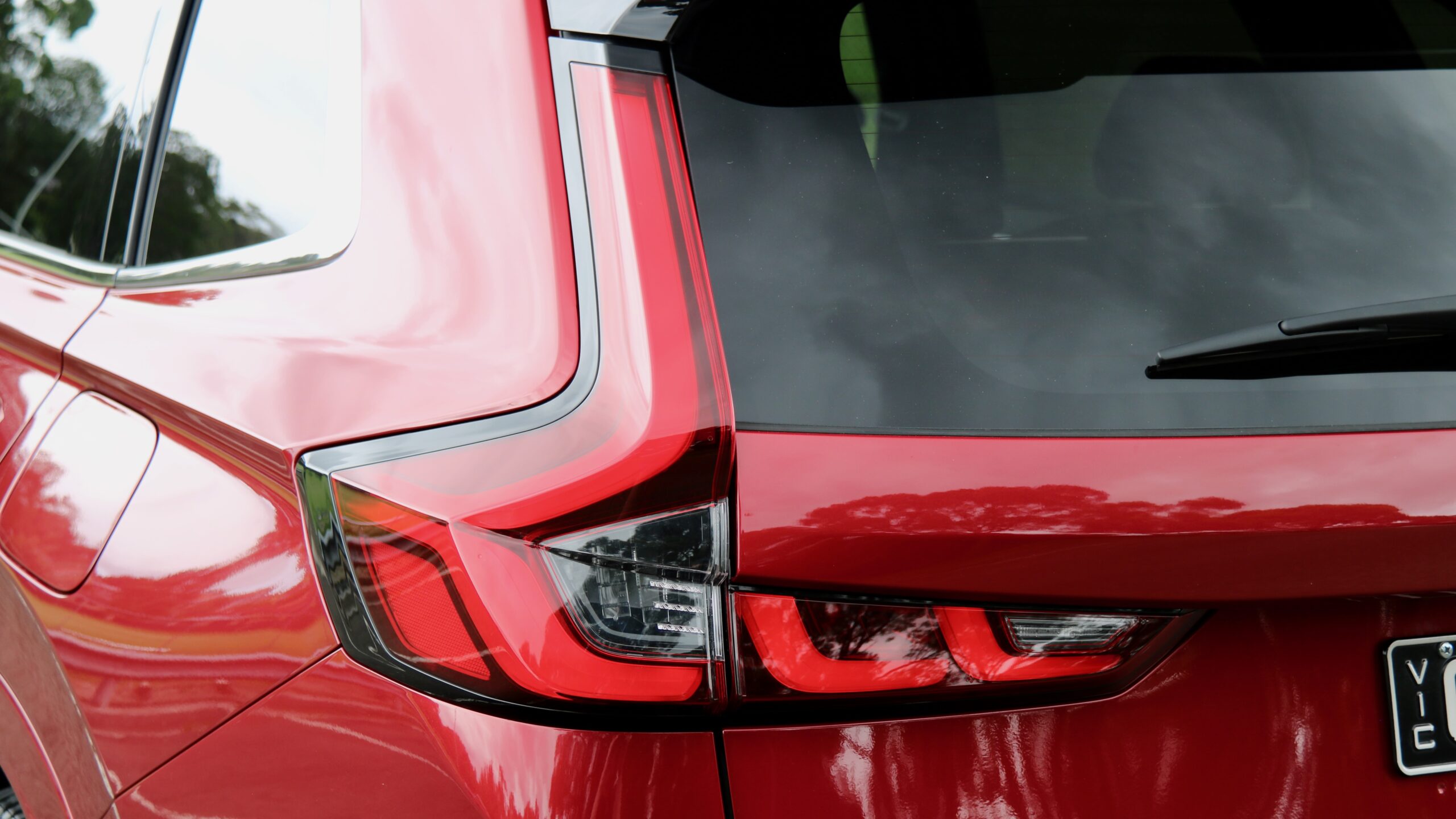
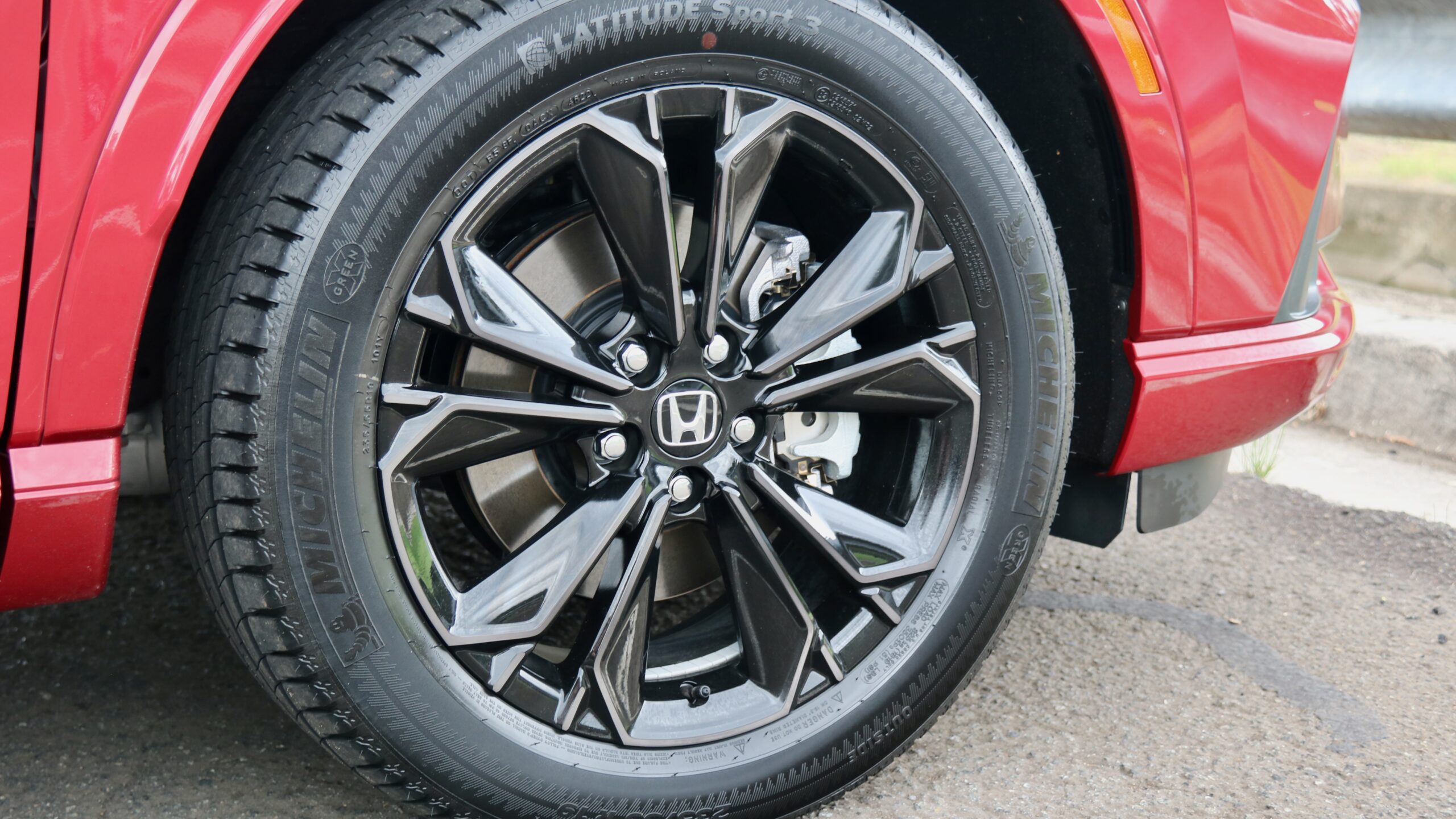
Against the RAV4, the CR-V adds a more powerful sound system, more airbags, Matrix adaptive high beam, all-LED lighting, a panoramic sunroof and sliding and reclining rear seats. But the RAV4 adds larger centre and driver’s displays, ventilated front seats, a digital rear mirror, a 360-degree camera and auto-folding mirrors. Overall, we think the CR-V offers similar value to equivalent X-Trail and RAV4 hybrids, and while it’s only available in 2WD form and it’s the most expensive, we think it adds enough extra features like more airbags, Matrix lighting and a panoramic sunroof to justify the $3,000 extra spend. What would make the CR-V e:HEV RS better value is seeing features like a 360-degree camera, auto-folding mirrors, heated rear seats, a third zone of climate, a spare wheel and a heated steering wheel added to the spec list.
How efficient is the 2024 Honda CR-V e:HEV RS?
Under the bonnet of the 2024 Honda CR-V e:HEV is a 2.0-litre four-cylinder hybrid drivetrain that makes 152kW of power (its peak torque figure isn’t quoted). It’s mated to an eCVT transmission and drives only the front wheels – if that sounds familiar, it’s because it’s a similar drivetrain to what’s used in both the Civic hybrid and the ZR-V hybrid and we quite like it in both those cars. Is it the same story for the CR-V hybrid? We think so, yep – it’s peppy, reasonably refined in town and can be quite efficient.
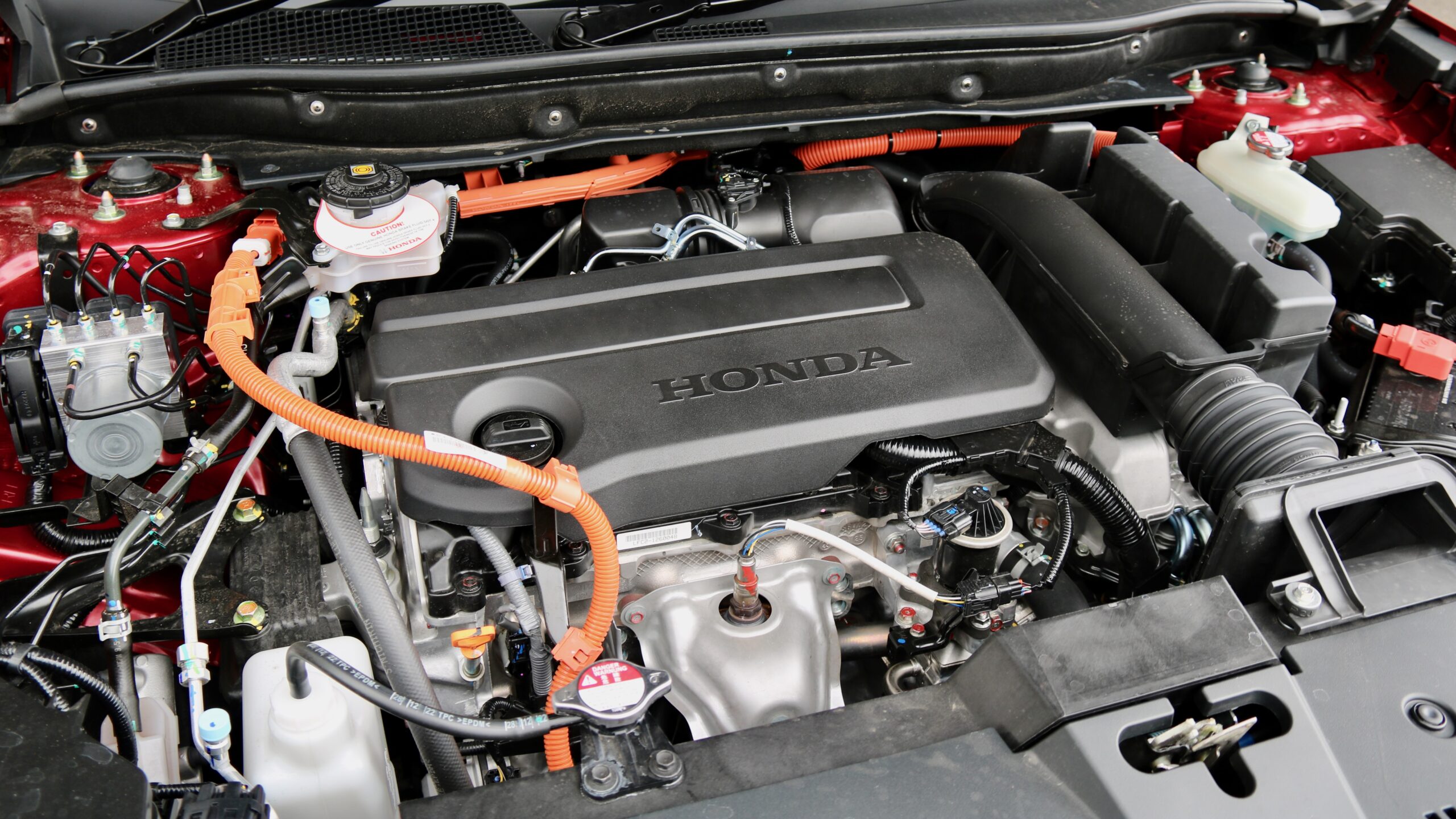
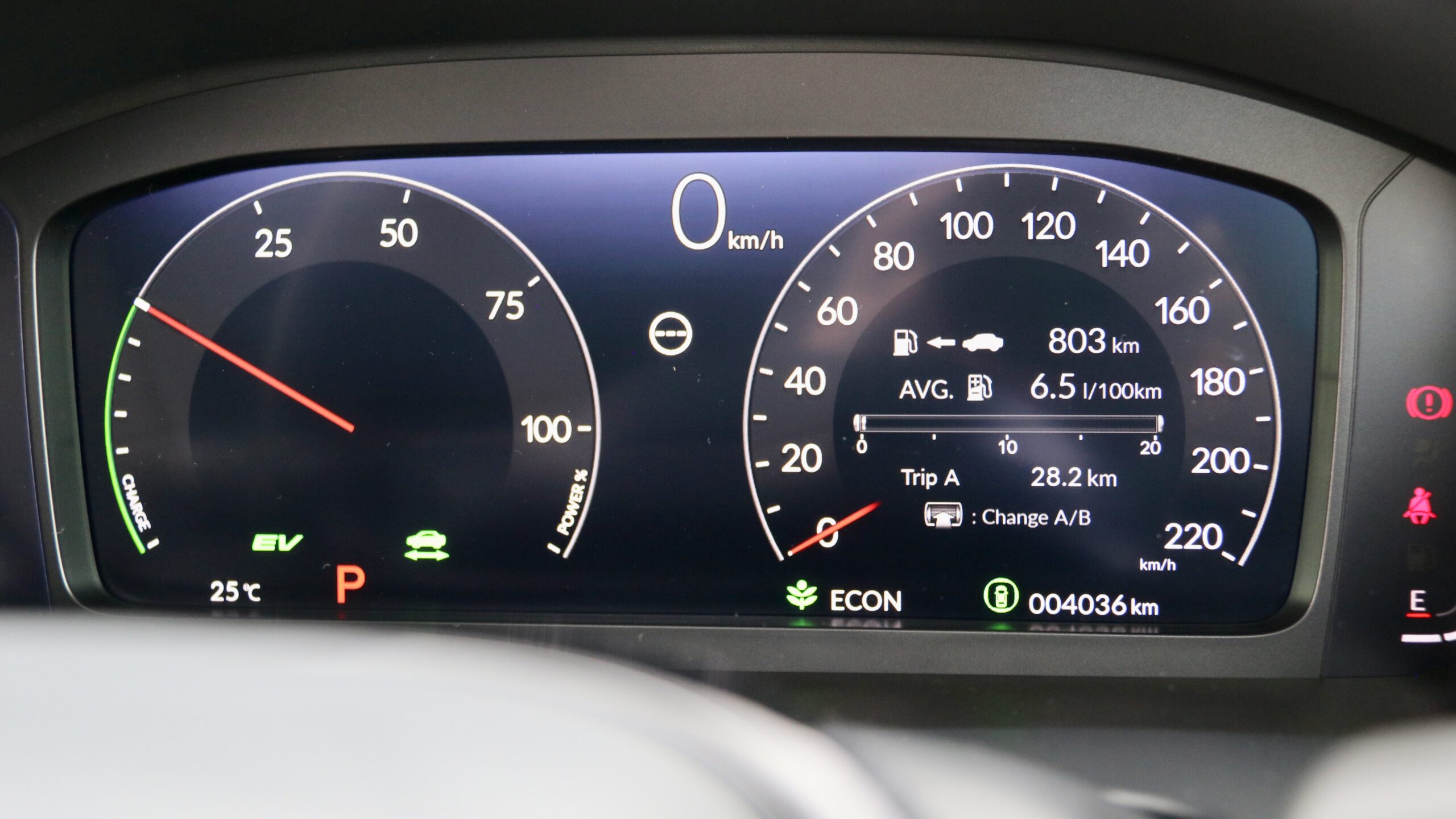
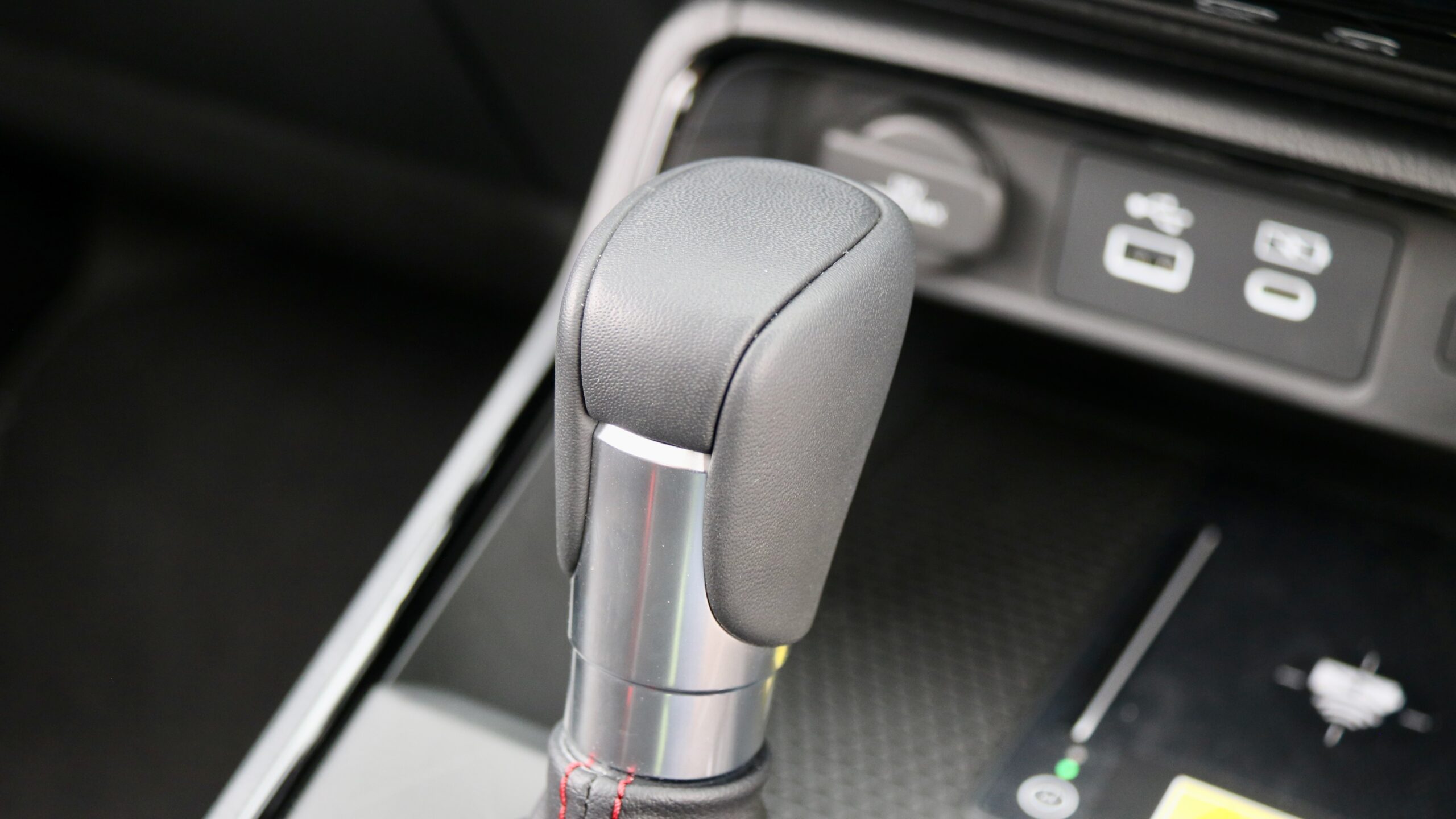
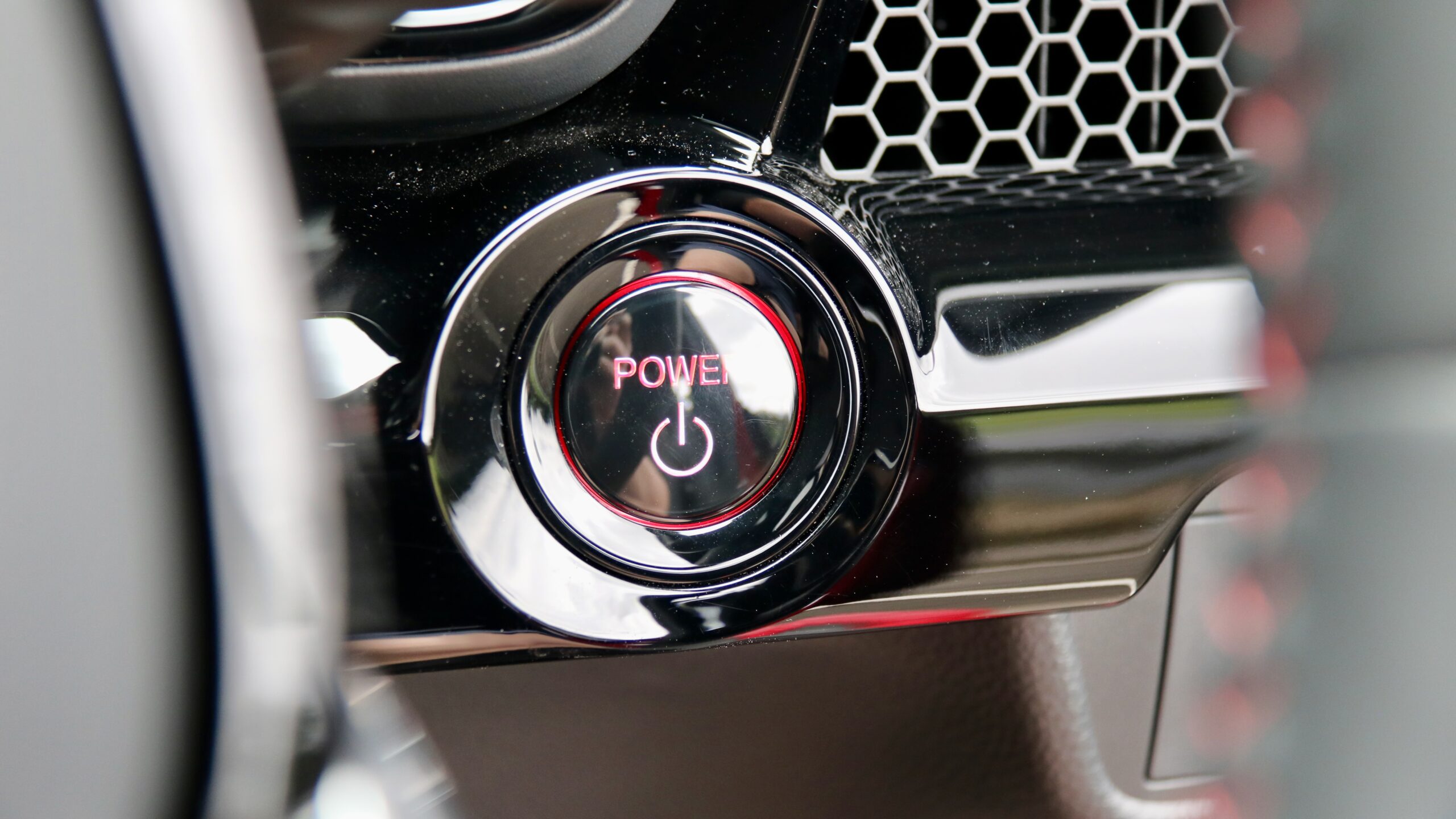
The engine is also somewhat loud when accelerating hard, though that could be in comparison with how quiet it is when running on purely electric power – which it can do reasonably often, though there’s no pure electric mode. Like its siblings, the transition between petrol and electric power is largely seamless and is only noticeable by looking at the fuel consumption meter in the driver’s display – it’s smoother than the transition in the RAV4, for example.
As we’ve seen in both the Civic and ZR-V hybrids, the CR-V’s eCVT transmission is excellent. It offers stepped fake ratios to make it feel more natural when speeding up and as a result, largely feels like a torque converter in that situation. We also quite like that the CR-V hybrid has a regular gear selector, unlike the ZR-V and Civic hybrids with their fiddly push button gear selectors. Behind the steering wheel are two paddle shifters to adjust the regenerative braking, of which there are three levels for drivers to earn back energy used when braking.
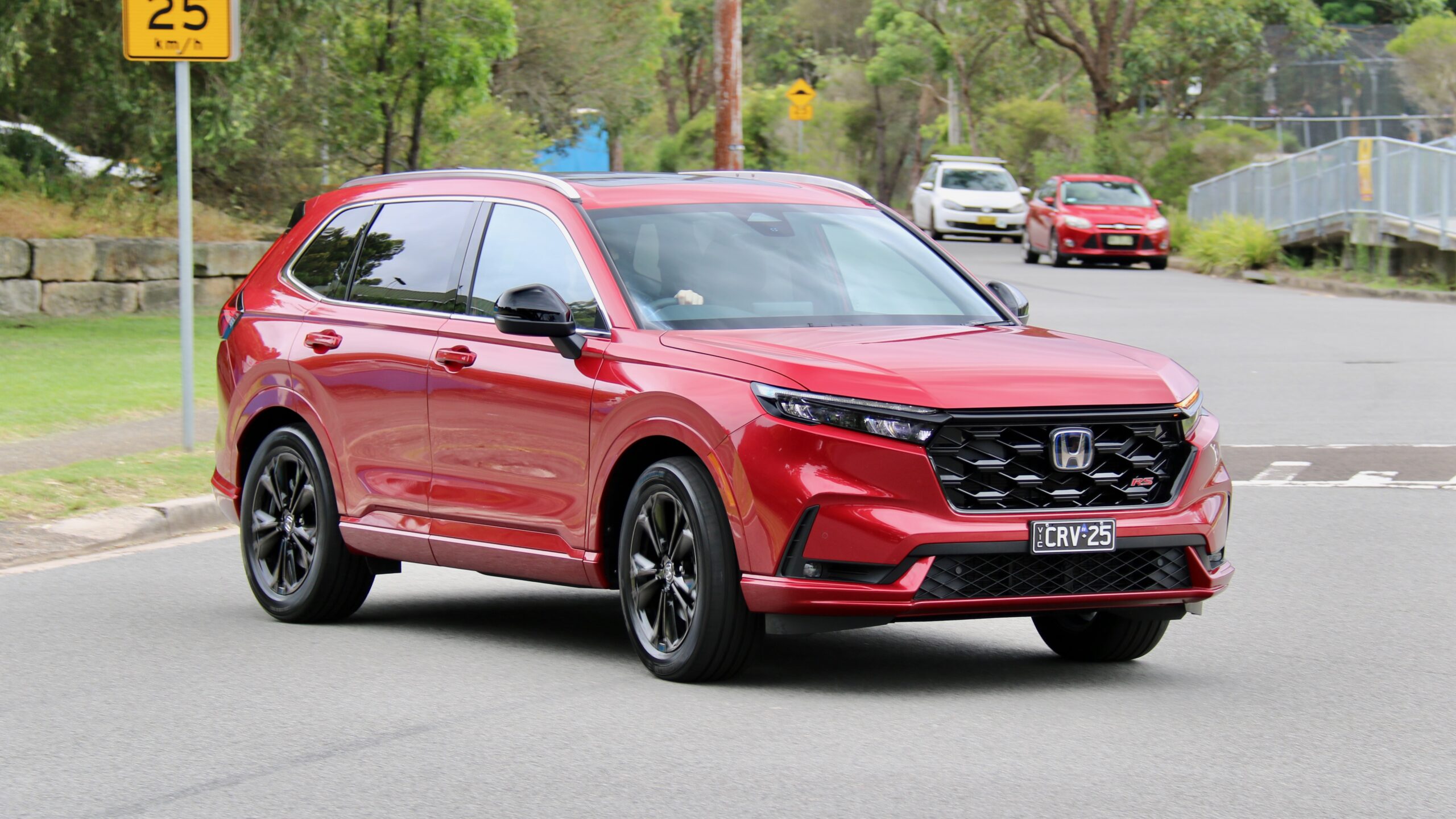
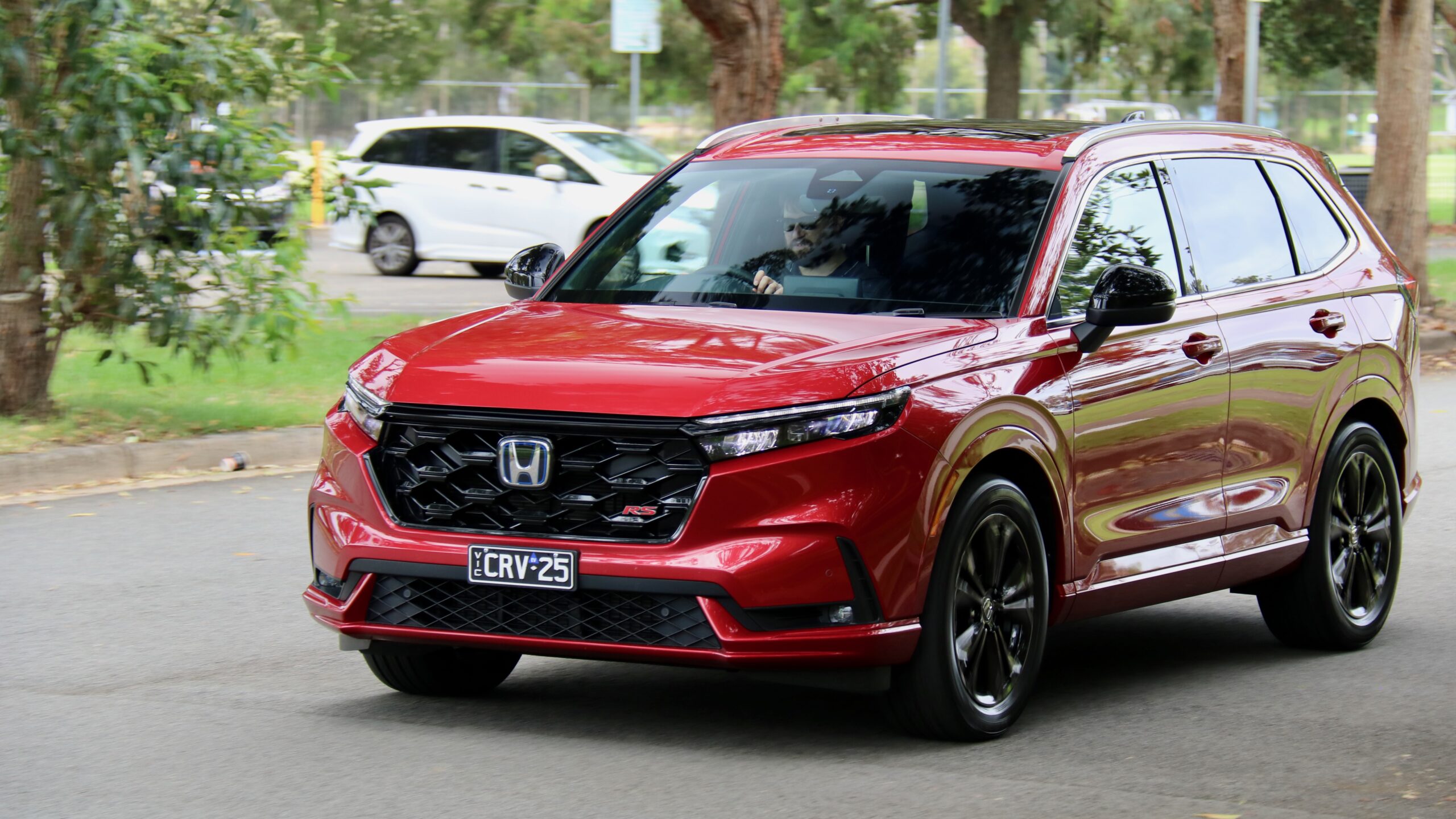
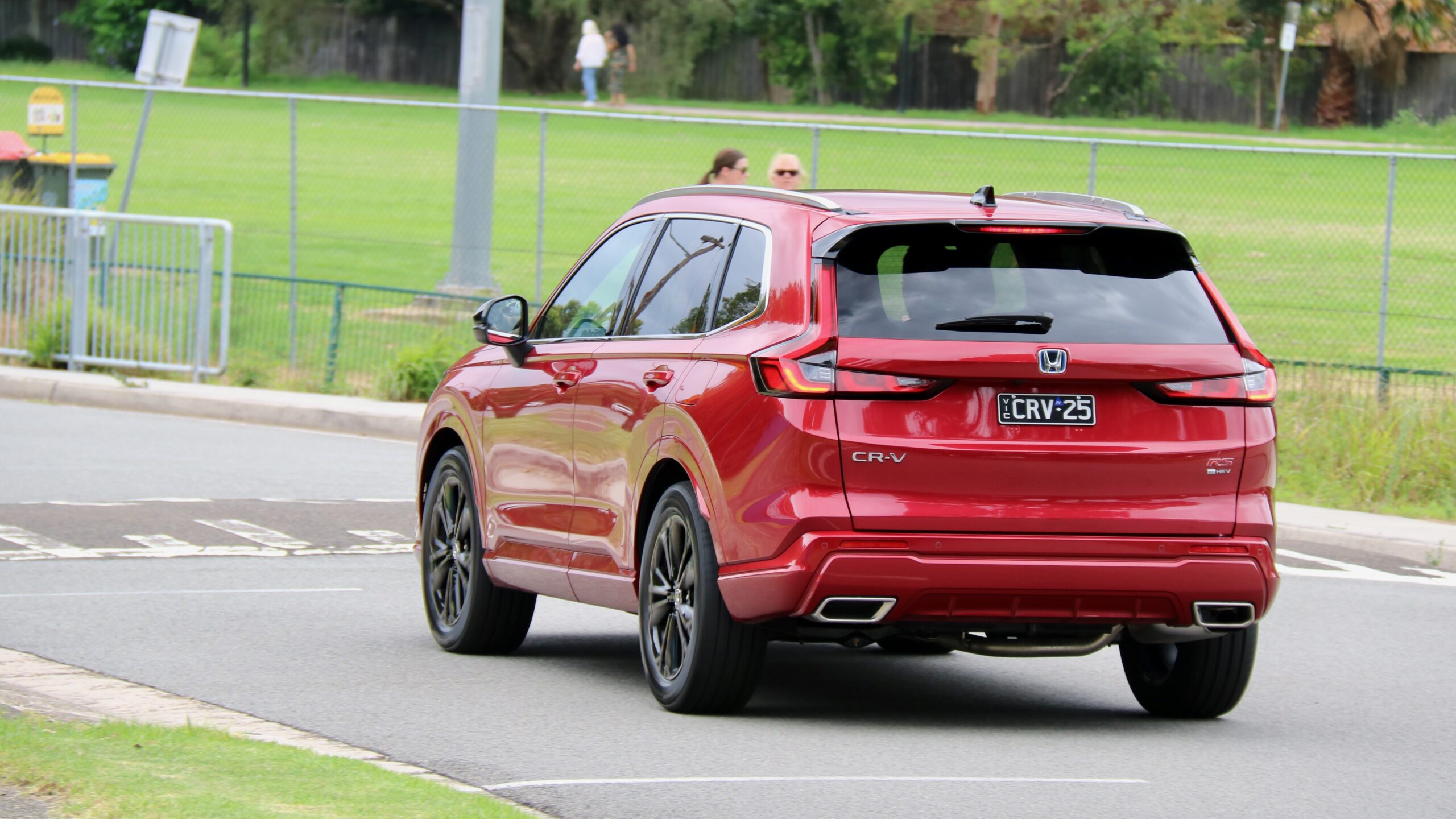
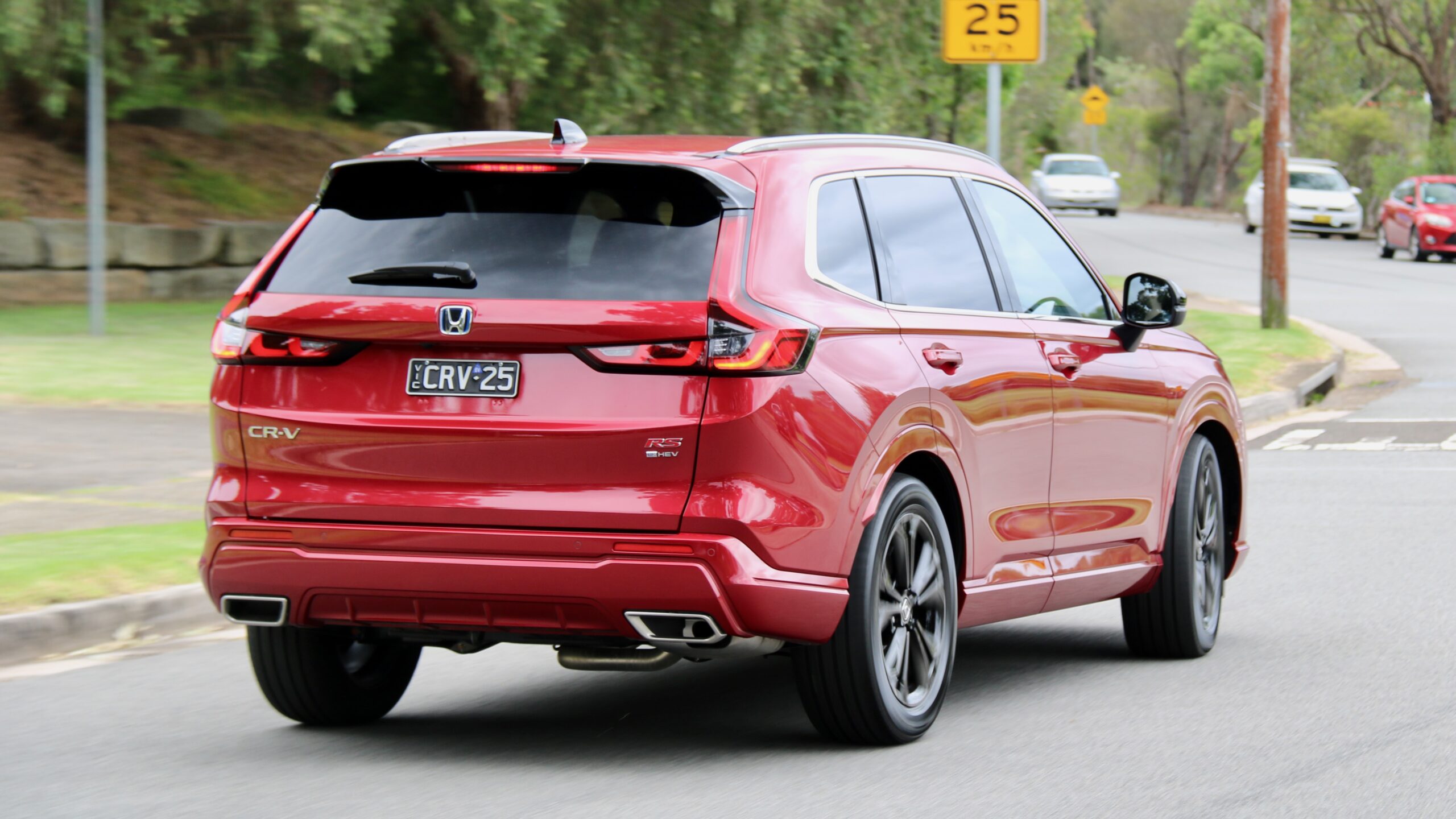
The claimed combined fuel consumption for the CR-V e:HEV RS is 5.5L/100km – against the RAV4 Cruiser Hybrid 2WD’s 4.7L/100km rating and the all-wheel drive X-Trail e-Power’s 6.1L/100km rating – with claimed CO2 emissions of 125g/km and in mixed driving, we achieved 6.2L/100km. That’s more than we’ve achieved in the RAV4 but less than X-Trail e-Power – plus, it’s a lot less than the petrol CR-V as well. Helping running costs further is that the it can run on 91RON regular unleaded and it features a 57-litre fuel tank.
What is the 2024 Honda CR-V e:HEV RS like to drive?
As with the previous-generation, the 2024 Honda CR-V e:HEV RS is deeply competent to drive. It rides and handles well, its road noise levels are reasonably low, its steering is quick and nicely weighted, its visibility is excellent and its active safety equipment is well tuned and makes you feel safe on the road. Dynamically, the CR-V is solid too thanks to its good chassis and keen handling, while the quick steering adds in another element to the fun from behind the wheel. Put it in sport mode and the CR-V adds a touch more steering weight and some artificial noise for a more involving – and reasonably fun – driving experience, more so than the RAV4 and X-Trail.
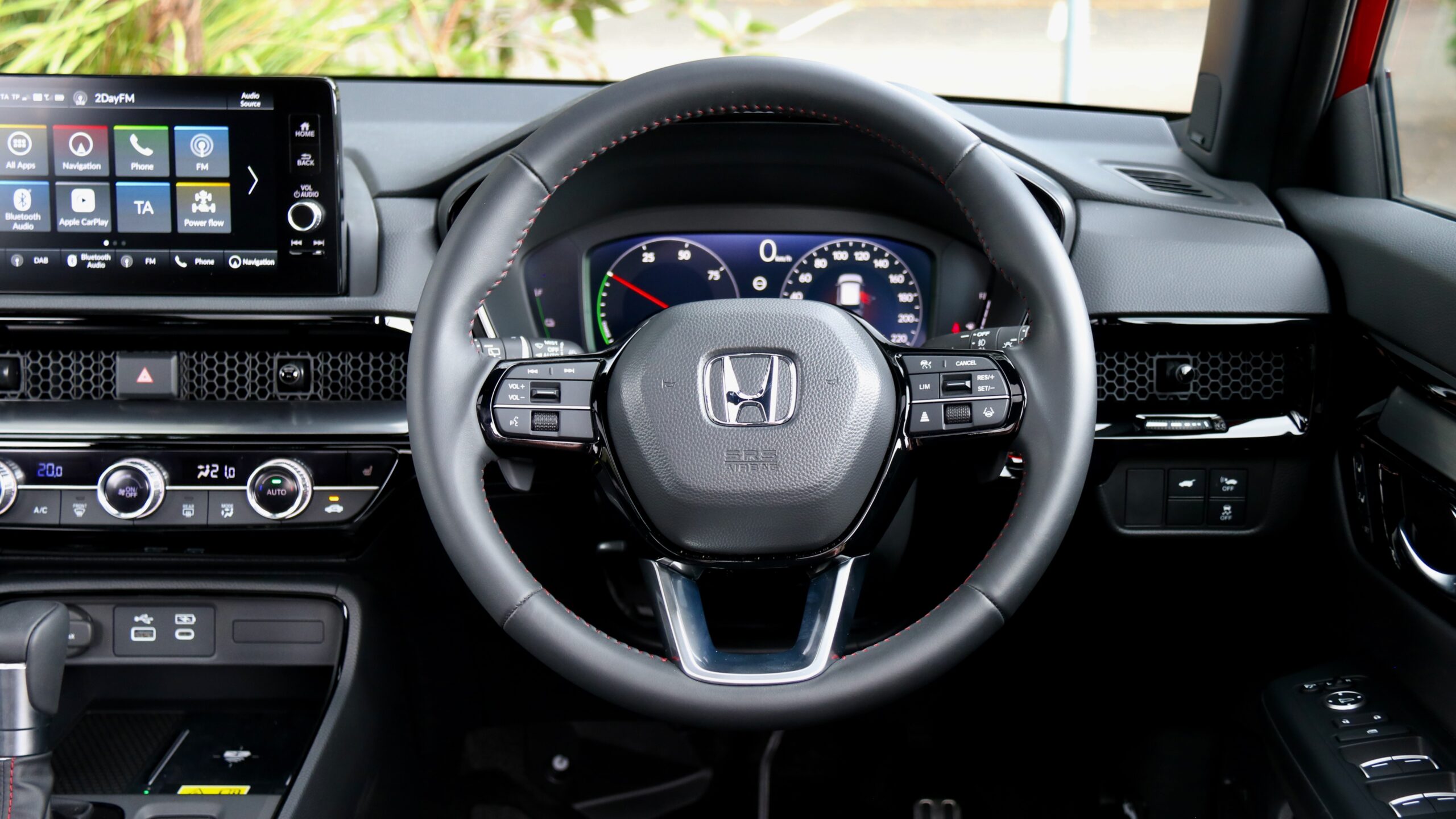
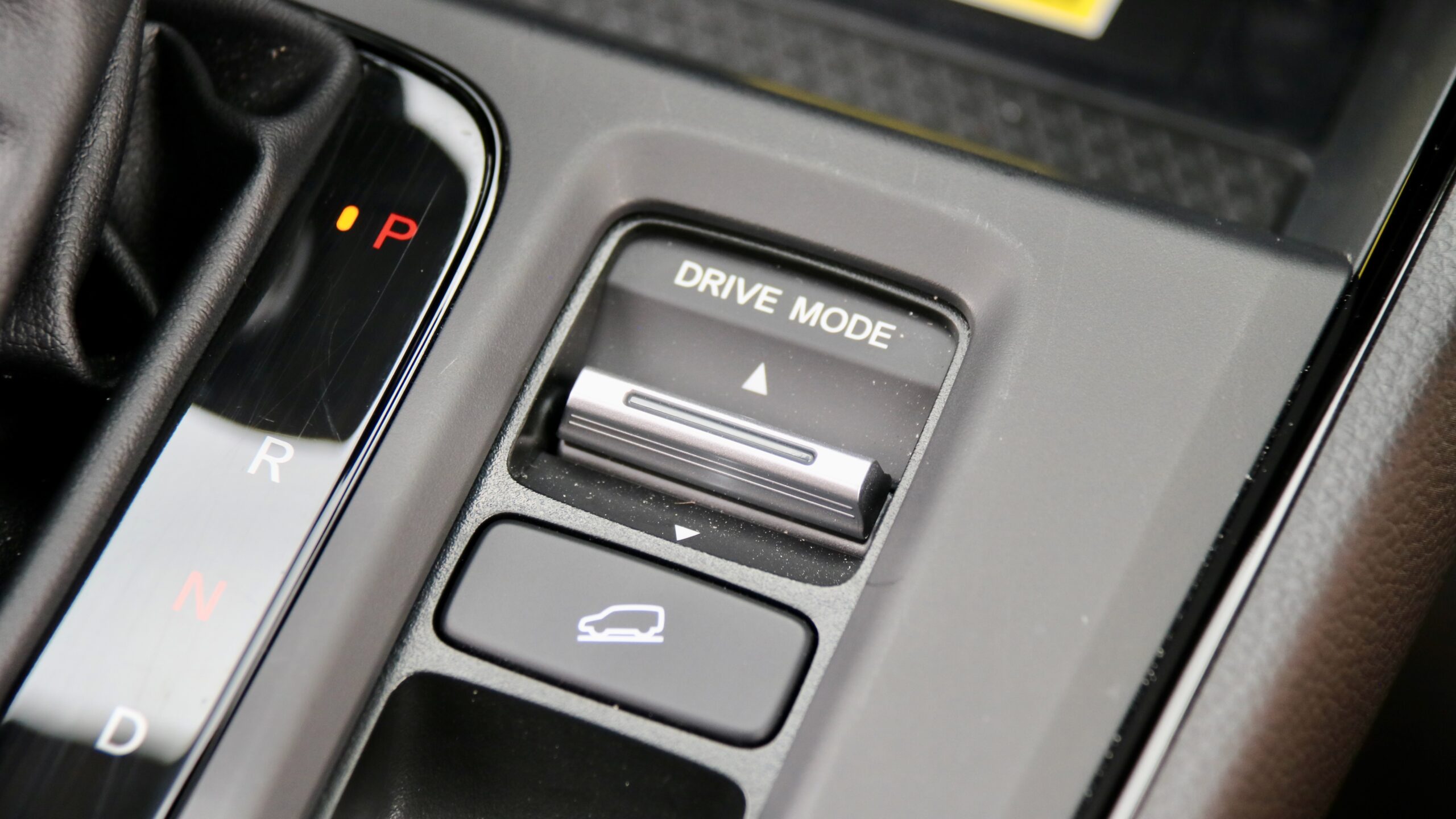
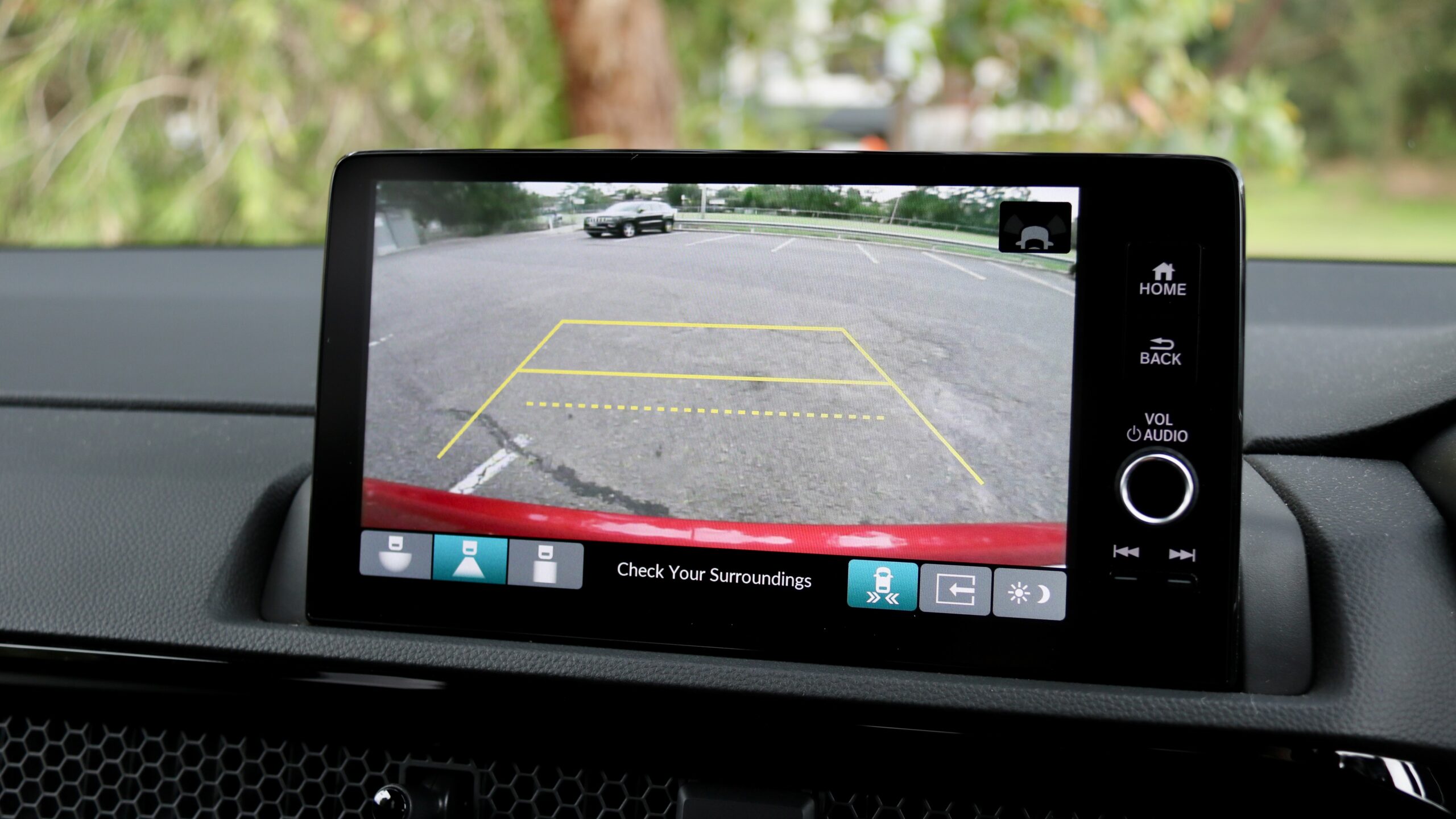
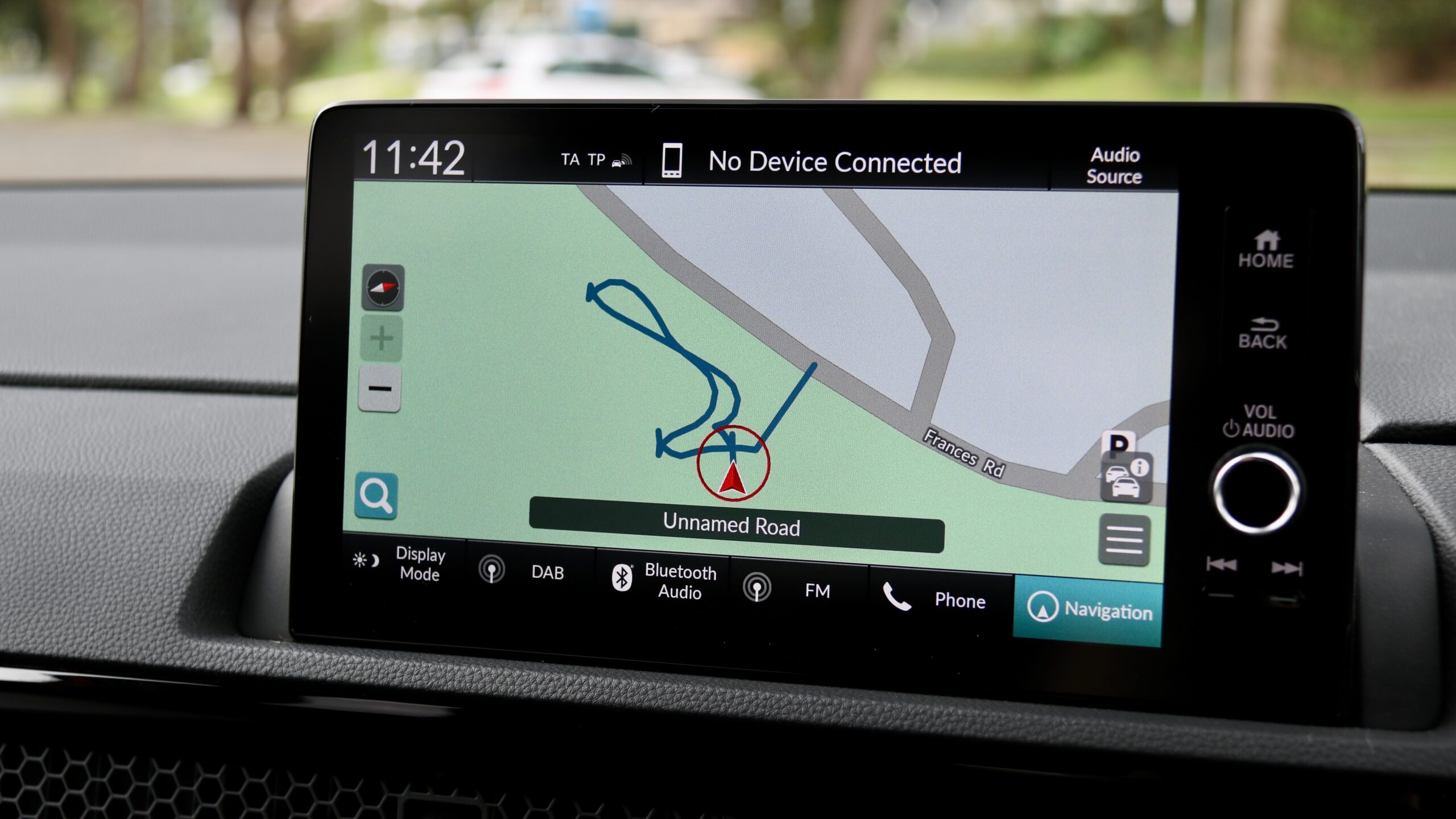
Elsewhere in the CR-V’s driving experience is good as well. The ride quality in the hybrid on its 19-inch wheels suffers a bit, however, as its extra weight can force thuds over larger bumps to really enter the cabin at higher speeds. On smooth roads, it’s excellent but we’d like to see a smaller-wheeled hybrid variant join the range for greater comfort. As we’ve seen in other Honda models like the ZR-V, Honda’s active safety equipment is great and it all works quite well. We particularly like the Tesla-style lane view in the driver’s display when the cruise control is activated – it even shows when the car’s indicators are activated too.
How practical is the 2024 Honda CR-V e:HEV RS ?
As we’ve experienced in previous-generation CR-V models, the interior of the 2024 Honda CR-V e:HEV RS offers a lot of what buyers in the mid-size SUV segment are looking for. It’s quite practical with lots of clever touches, it’s good quality as you’d expect from Honda and the technology is also well integrated with large displays and solid ergonomics. Only the driver’s display really grates as it’s located quite far into the dashboard and accentuates the feeling of sitting on – not in – the seat.
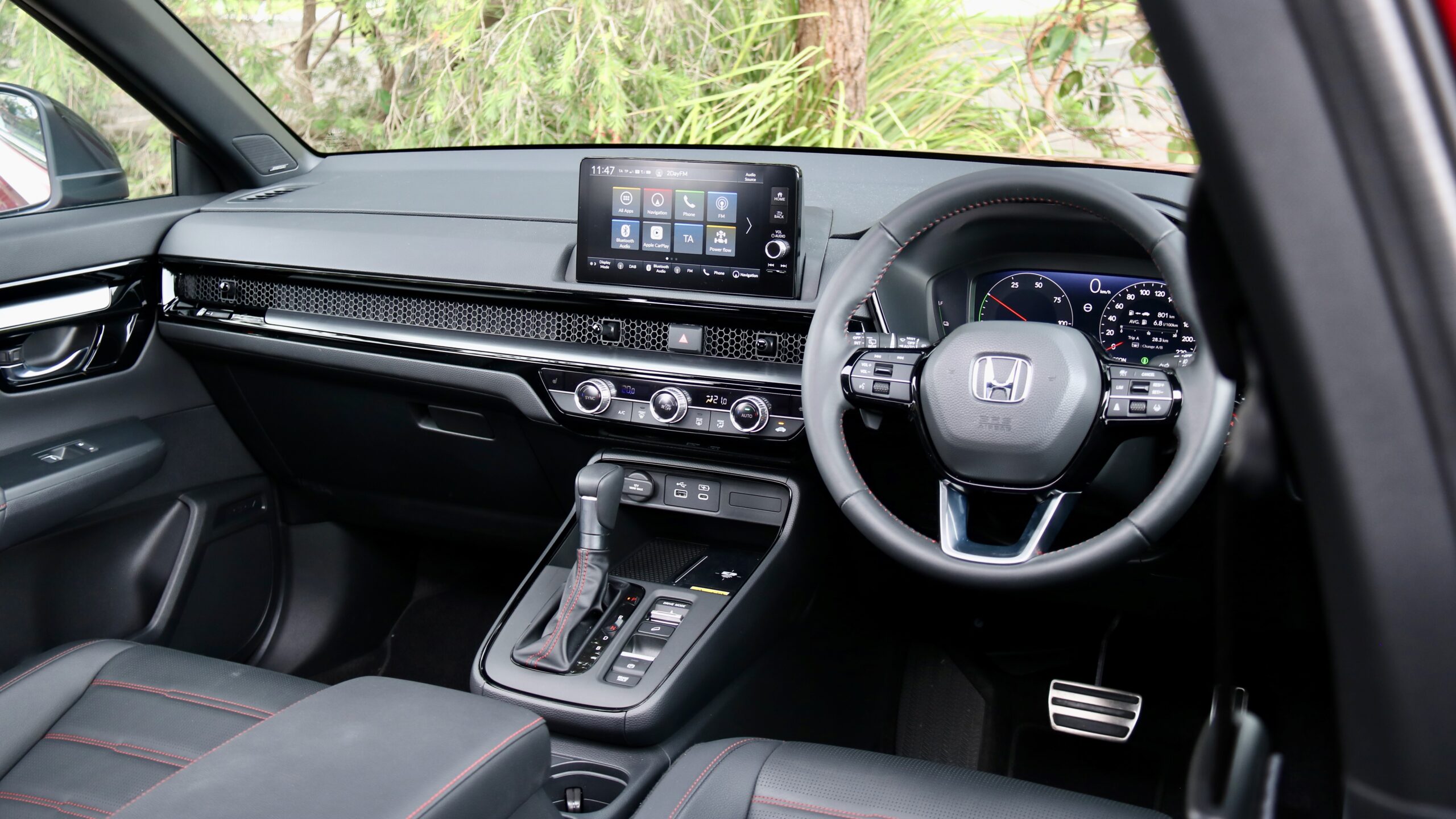
As for quality, the CR-V’s cabin is solid in the mid-size SUV segment and shades the RAV4, but the X-Trail’s mix of materials is richer, for example. Still, the tops of the dashboard and doors are covered in soft touch materials, while the leathers and switchgear used throughout the cabin feel good to touch as well – we’d just like to see a soft centre console panel like the ZR-V as it would add to the quality feeling and would give more comfort to knees resting.
As for practicality, it’s clear that Honda has thought the CR-V’s cabin through. The door bins, for example, aren’t huge but they have sectioned parts just for drink bottles and the bin underneath the centre armrest is massive. The cupholders in the front are deep – and are illuminated too – while there’s a tray behind them for a wallet, and a big tray underneath the centre console with storage. It also features a wireless phone charger, but it didn’t work well for this writer’s iPhone 15 Pro Max – we’d love to see a Hyundai-style grip installed so that phones with big cameras can charge effectively.
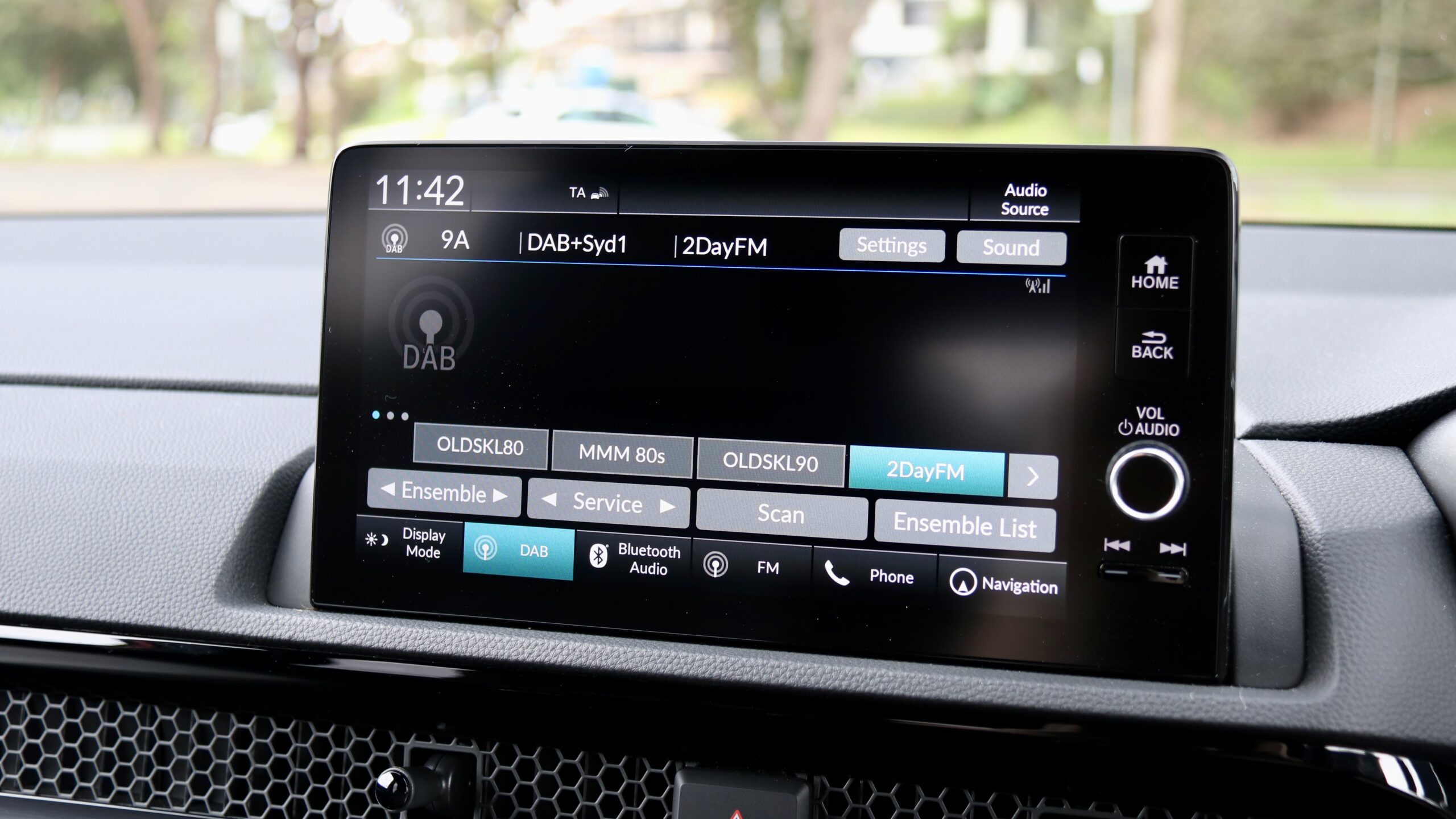
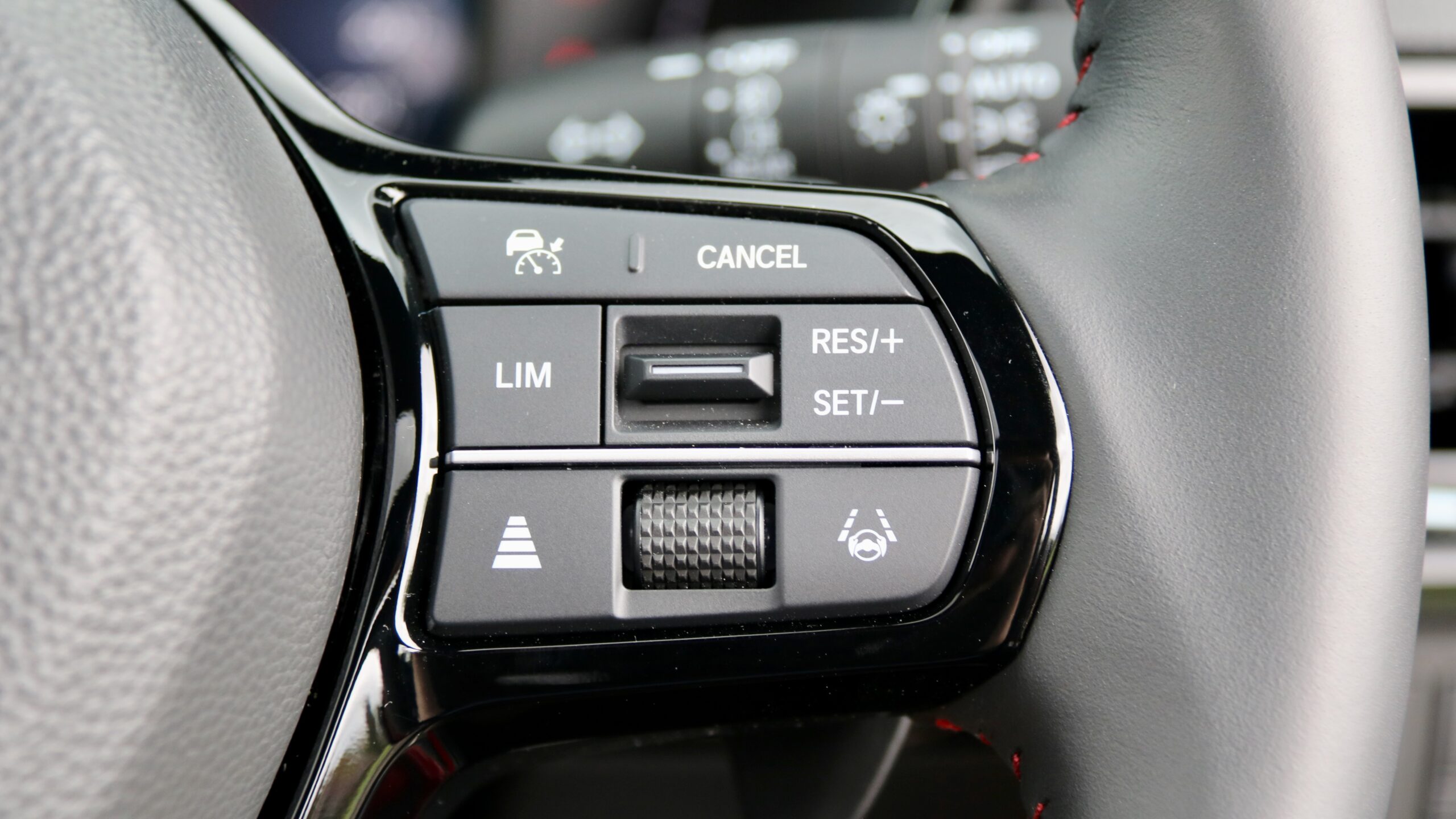
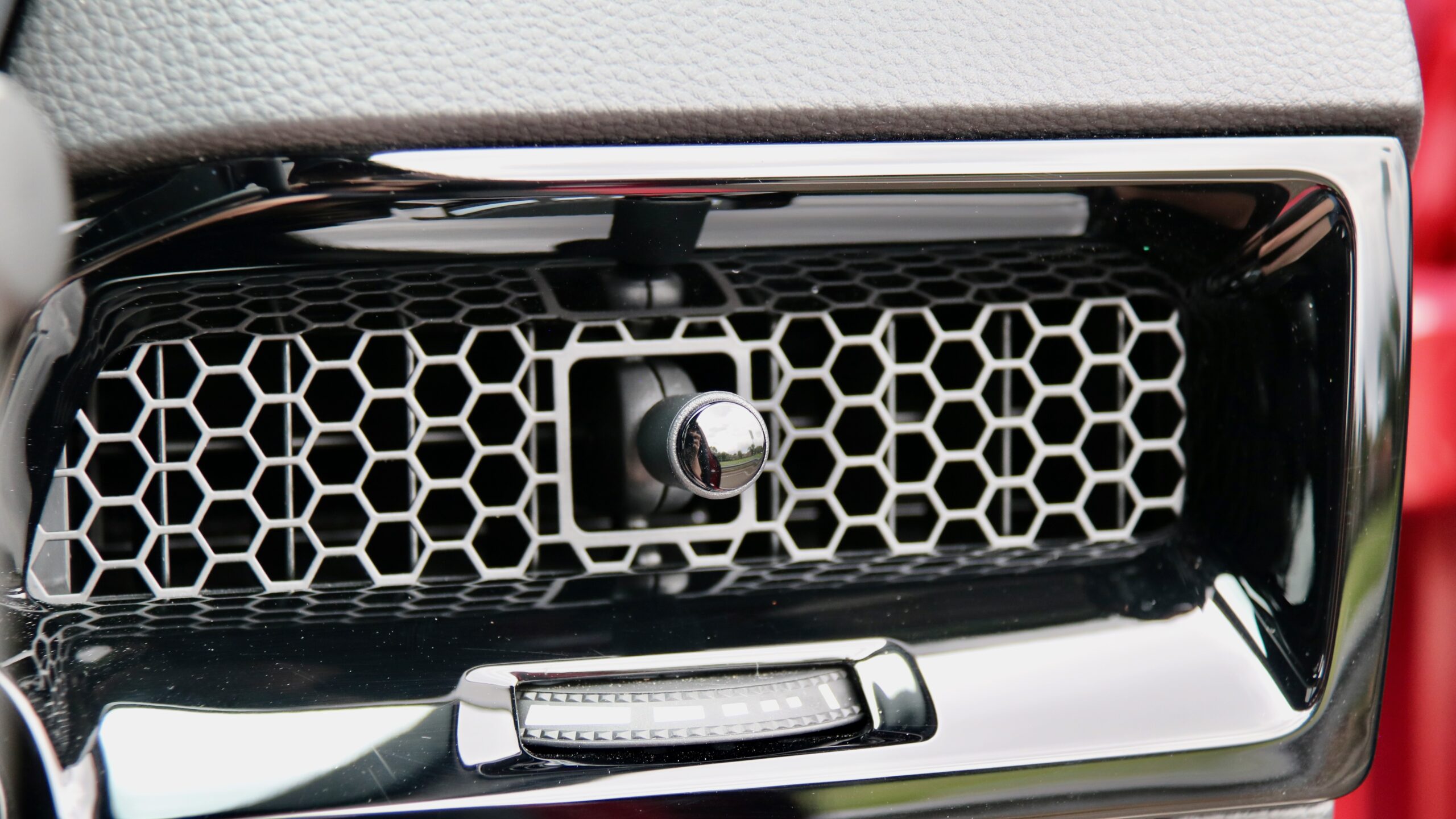
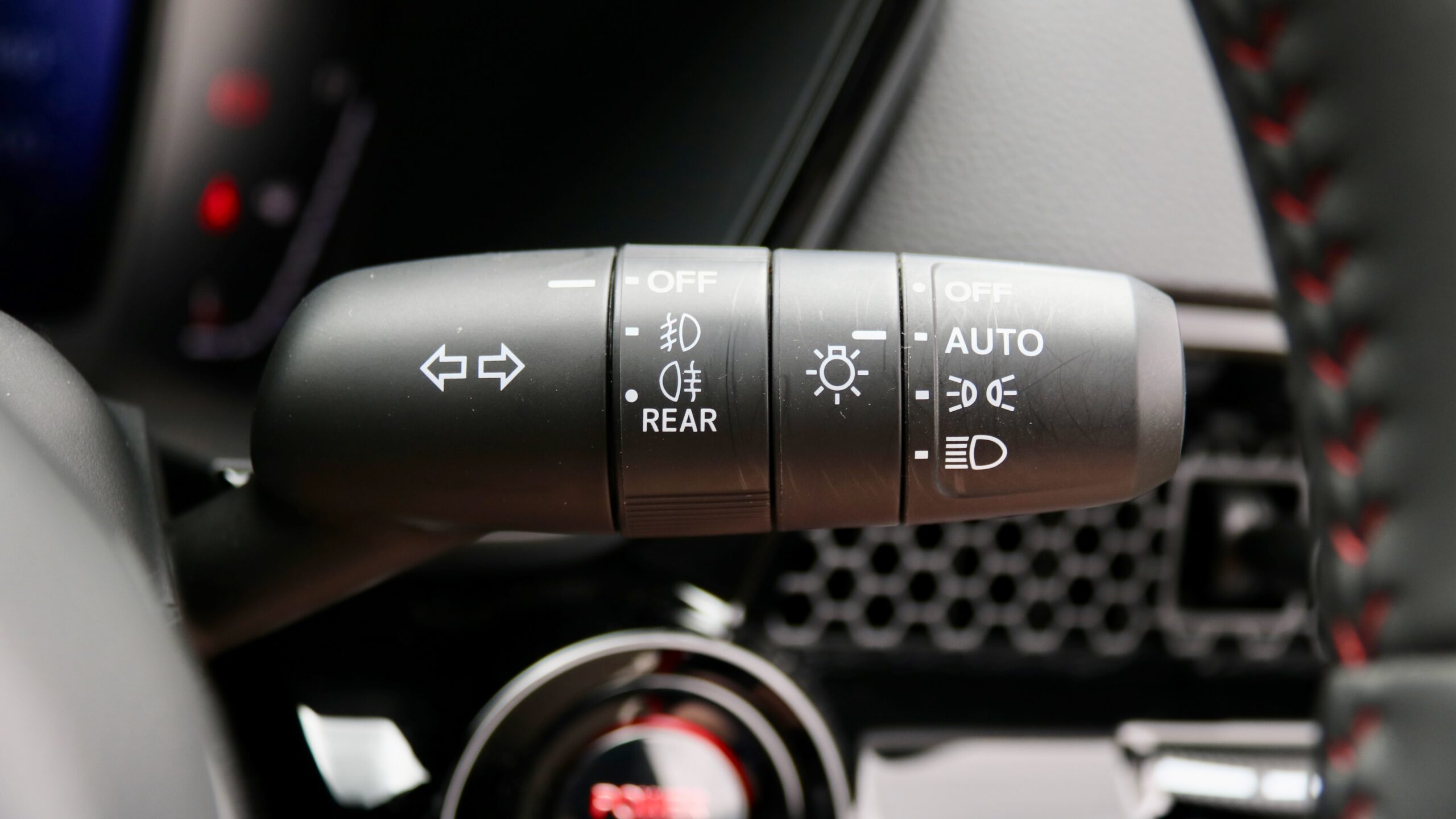
Centre of the CR-V’s cabin is the same 9.0-inch touchscreen that features in the HR-V, ZR-V and Civic range. It features satellite navigation, wireless Apple CarPlay and wired Android Auto, digital radio and live services for over-the-air updates and remote app functionality. It’s a generally pretty good system with a quick reaction to touch, easy to use menus and bright colouring. The wireless Apple CarPlay also worked flawlessly in our time with it. We wish the screen quality was a touch better, but the 12-speaker Bose sound system is pretty punchy and we love how there are still physical controls for the air-conditioning – thank you Honda for not integrating them into the screen!
The rear seat of the CR-V is – like its predecessor – quite practical, quite comfortable and offers some good features. The room on offer is excellent, even for taller adults – the legroom and headroom are plentiful, even despite the standard panoramic sunroof. The windows are large and the doors open to 90-degrees, which is very helpful for loading kids into the back. As for features, the seats recline and slide, as well as air vents, two USB-C ports, two map pockets, a centre arm rest with cupholders, door pockets and two ISOFIX points and two top-tether points for child seats – we’d also like to see the third zone of climate from seven-seat CR-V models, window shades and heated seats feature as well.
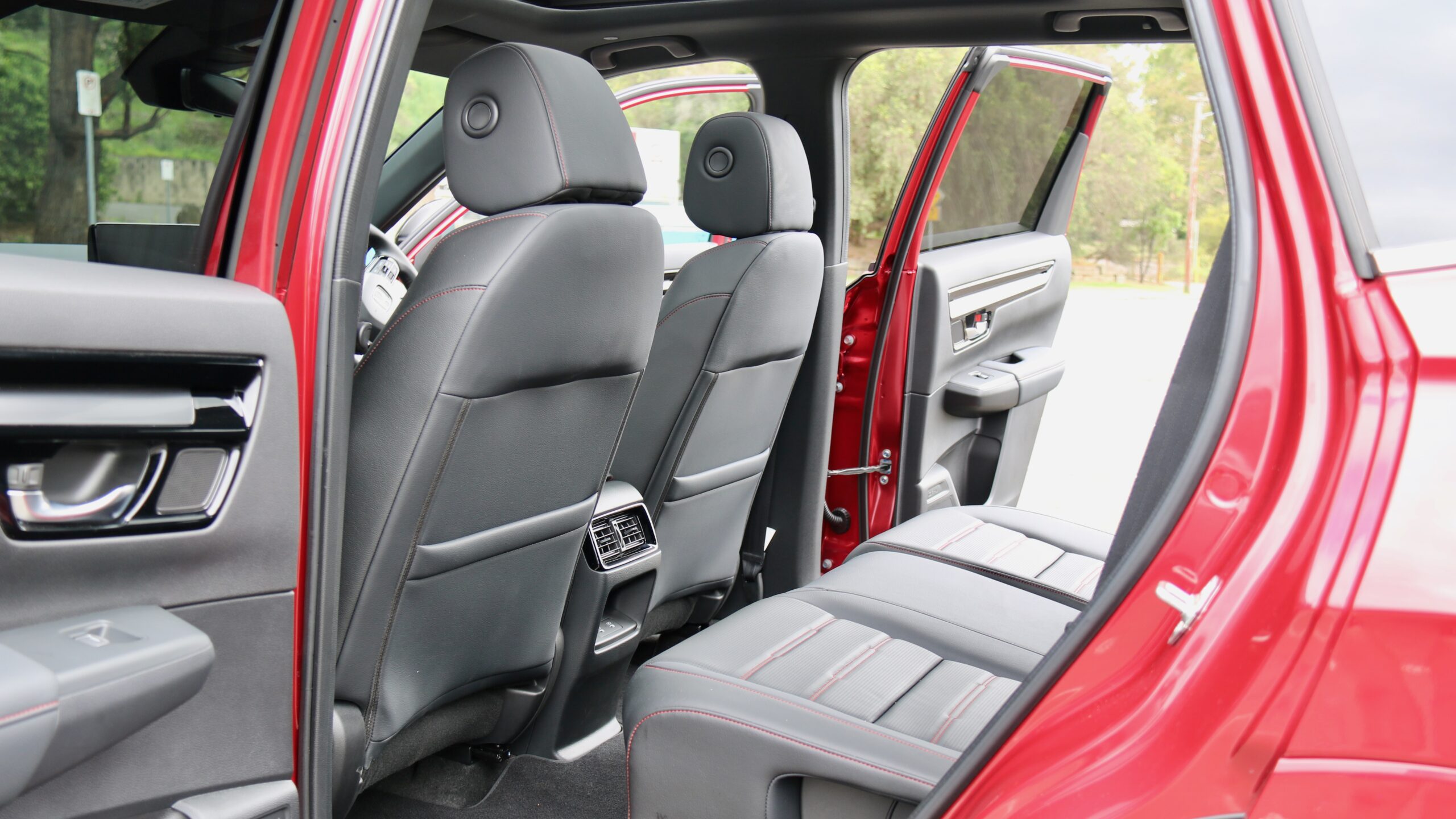
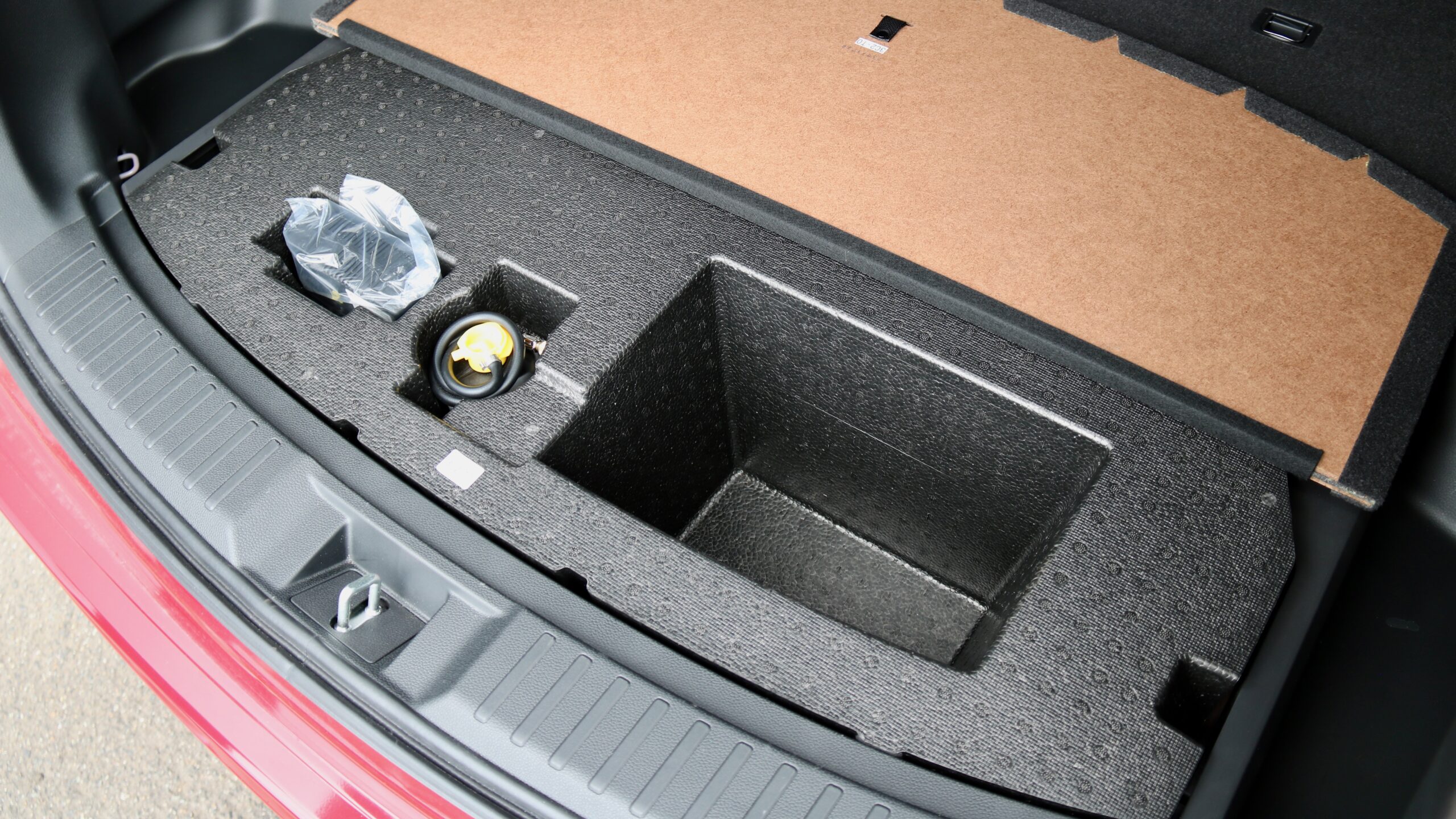
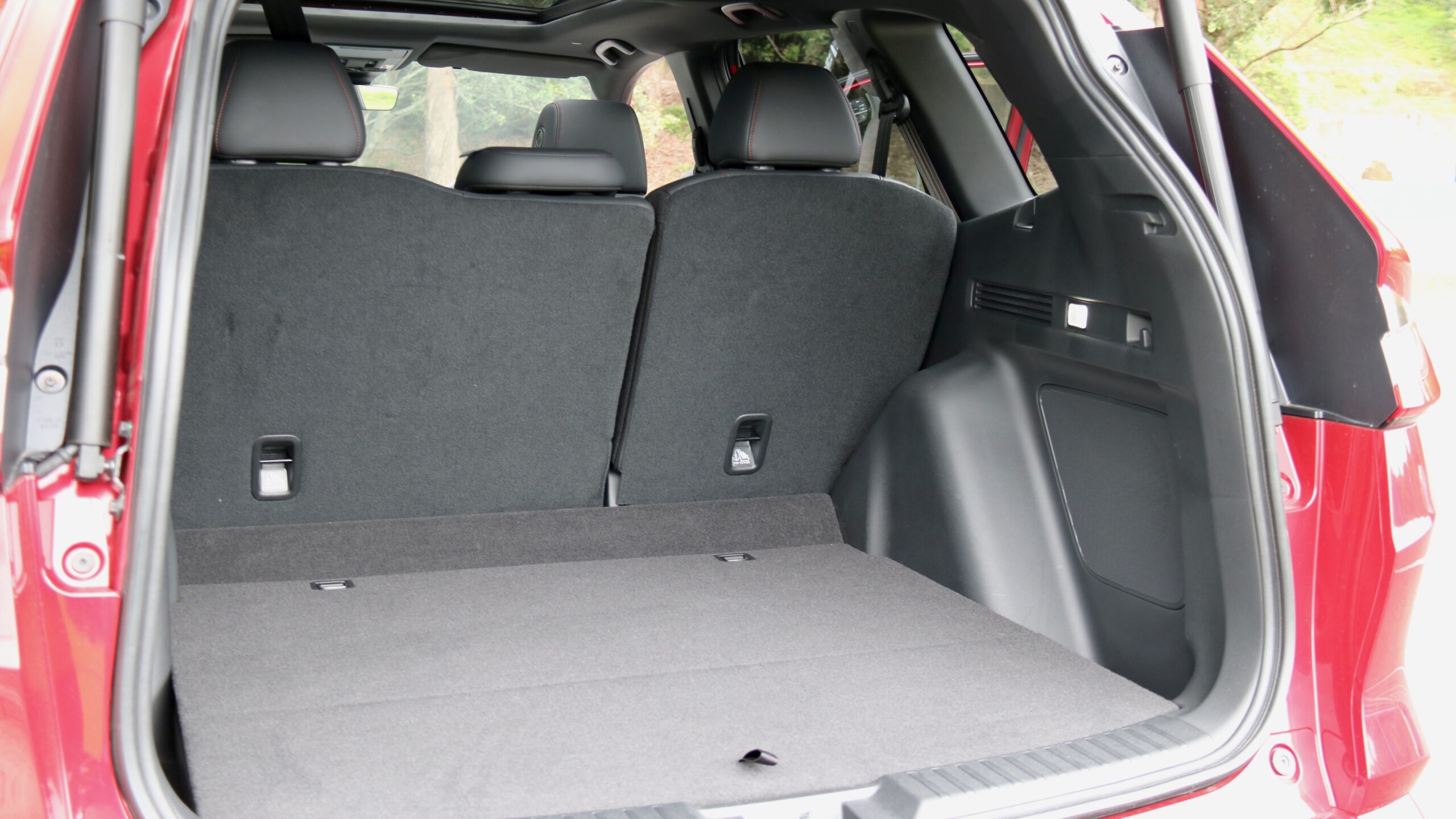
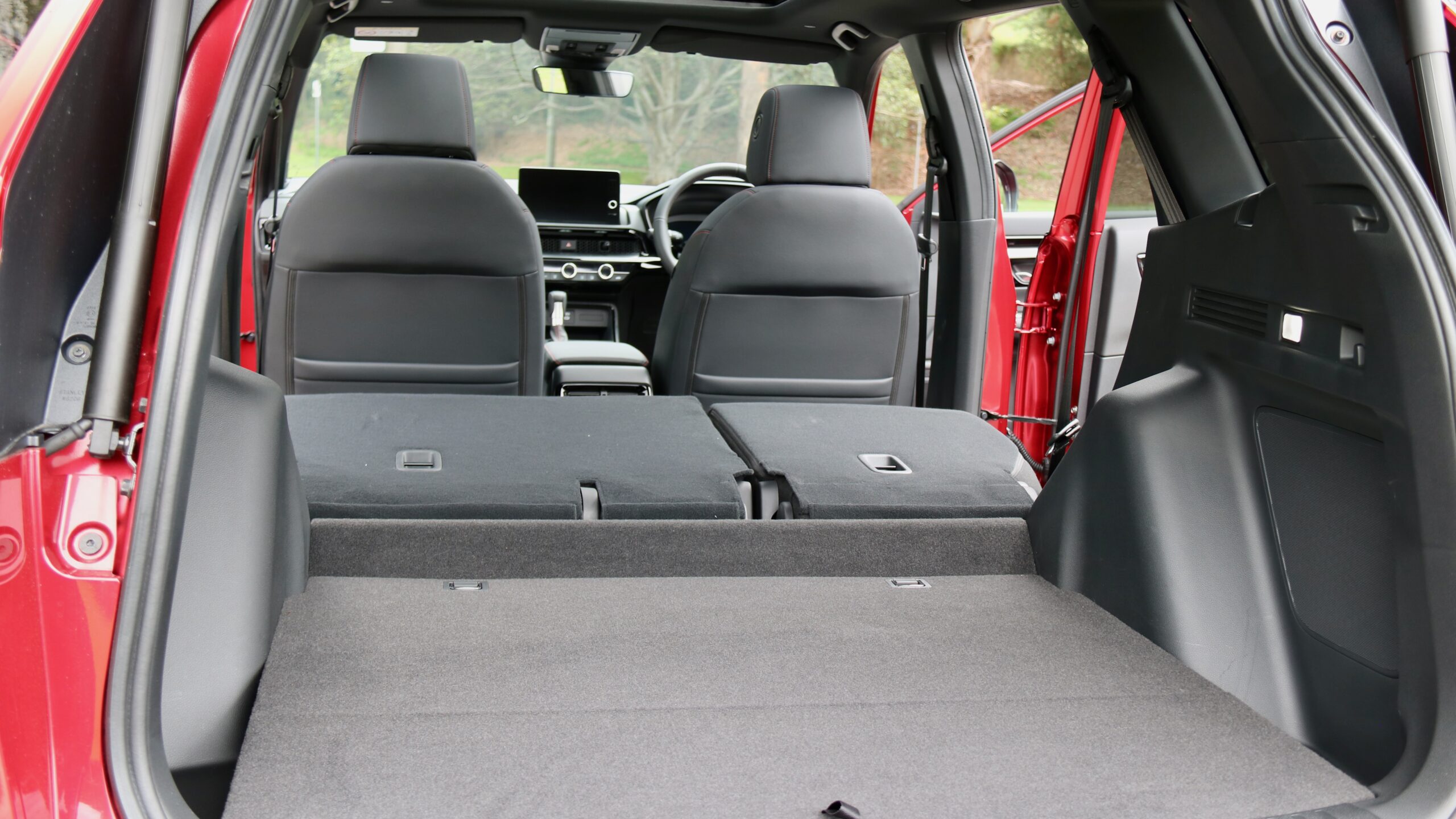
The boot of the 2024 Honda CR-V e:HEV RS measures 581-litres with the seats up and 1,636L with them folded – that’s 6L larger than the X-Trail and 4L smaller than the RAV4 with the seats up. There are a few clever features like hooks and under-floor storage, while the seats fold completely flat – though there is an annoying step in the boot floor when folded. That’s because the floor of the CR-V’s boot is impressively low, including the opening, which makes it easy to lift heavy things into. The electric tailgate can also handily close by walking away from it, which we think all cars should feature. Annoyingly though, there’s no spare wheel – just a tyre repair kit.
What warranty covers the 2024 Honda CR-V e:HEV RS?
As with other new Honda products in Australia, the 2024 Honda CR-V e:HEV RS is covered by a five-year/unlimited km warranty with five years of roadside assistance and five years of cheap servicing at $199 per service. The battery warranty is eight years/160,000km and five years/50,000km of servicing costs just $995. At the time of writing as well, Honda Australia is offering a seven years of warranty and roadside assistance to CR-V buyers if their contract is signed by 31 March 2024.
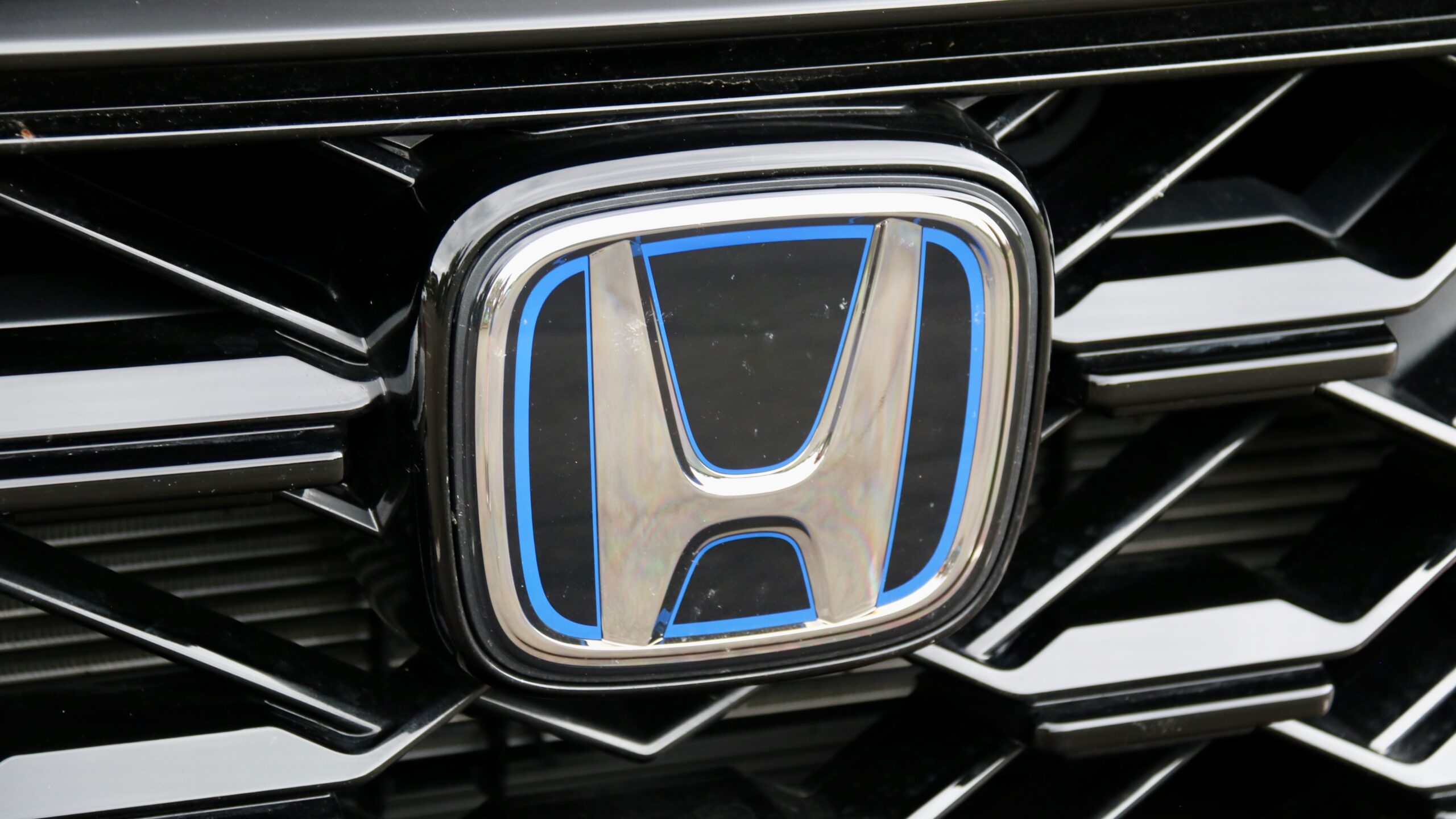
Both Honda and Toyota also cover their products with five-year/unlimited km warranties as well, though while Nissan also offers five years of roadside assistance, Toyota gives none. However, Toyota gives two more years of mechanical warranty if serviced to logbook conditions and up to 10 years of coverage for the battery if an annual battery check is undertaken. Like the Honda, the X-Trail’s service intervals are a short 10,000km or annually – it costs an expensive $2,353 to service over five years/50,000km ($470 per service) – while the RAV4’s intervals are a longer 15,000km/annual job and it costs $1,300 to service over five years ($260 each service).
Should I buy a 2024 Honda CR-V e:HEV RS?
Overall, as with previous generation CR-V models, the 2024 Honda CR-V e:HEV RS presents solid buying in the mid-size SUV segment. The CR-V is quite practical, good quality, efficient, cheap to maintain, nice to drive and definitely worthy of consideration if you’re after a mid-size SUV – which, judging from the new car sales in Australia, you most likely are.
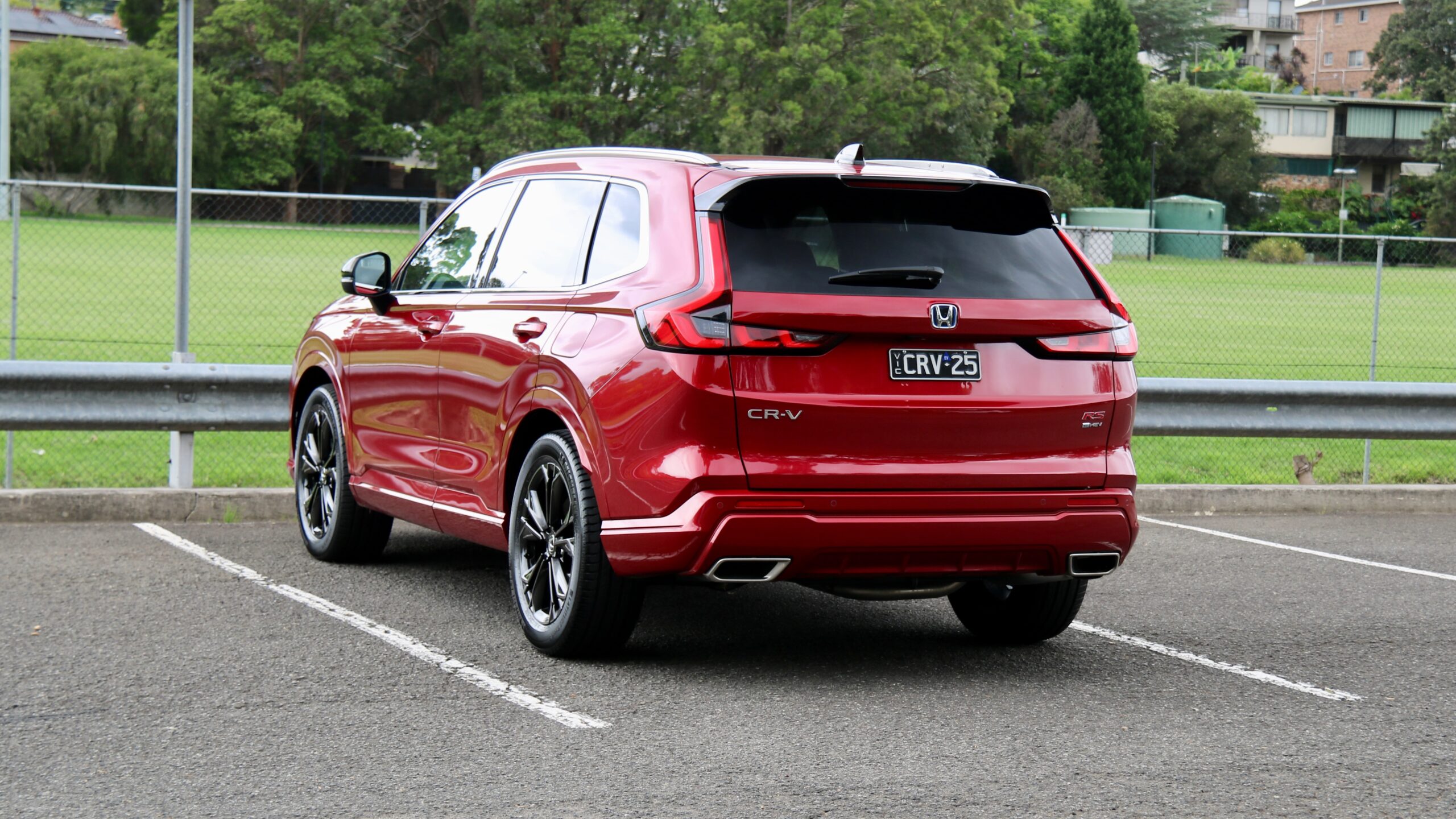
Counting against the CR-V is that it’s only offered in hybrid form at the top of the range and that one single hybrid model is not cheap to buy, its rivals are available with all-wheel drive and that in RS form, it’s still missing some pieces of equipment like a 360-degree camera (which the cheaper ZR-V hybrid features). But these are small issues in the overall appeal of the CR-V which, despite fierce competition, we think is more well-rounded than ever before.
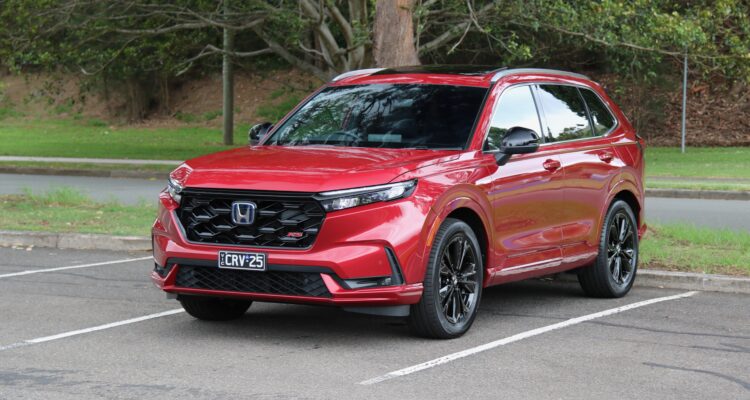
Leave a Reply